
Grammar , Vocabulary

Useful Chinese Essay Phrases
July 8, 2020
By Ellen

Nowadays, many international students have decided to study abroad, and China has become a highly popular destination. In universities, essay writing is a basic skill and the “Academic Writing” lectures are always attracting many students to attend.
Here we have summarized some “all-purpose” phrases and sentences which hopefully you would find useful.
Chinese Essay Phrases Used in Abstracts
The abstract should explain the purpose, method, results, and conclusion of your research, also highlighting the new ideas that you proposed; and do remember to keep your language concise while writing. The purpose of the abstract is to conclude and summarize the main contents of your essay so that the reader could have a brief understanding without having to read the entire paper. Chinese abstracts are usually around 200 characters.
Research Background, Significance, and Current Situation
Extremely useful/badly needed/affecting people’s lives (1-2 sentences)
| 对…有贡献 | contribute to |
| 主要原因 | major cause |
| 至关重要 | crucial/essential |
| 重要影响 | profound impact |
| 在…中起中心/重要作用 | play central/important roles in |
| X已经被深入研究了其在…中的作用 | X has been intensively studied for its role in… |
| X因其Z性质/特性引起了Y的极大兴趣 | X aroused great interest of Y due to its Z nature/characteristics |
Proposing the Object of Study
Played a very important role (1-2 sentences)
| 本文提出了一种针对…来…的方法。 | This paper proposes a method/approach focusing on…to… |
| 我们提出了一种…,它使我们能够…… | We presented a new…, which enables us to… |
| 本文介绍几种针对…进行改进的…模型。 | This paper introduces several improved…models focused on… |
| X是一种非常有吸引力的方式以/来…… | X is a highly attractive method to/for… |
| 但其在…中的潜在作用却鲜为人知。 | But little is known about their potential role in… |
Purpose of the Study or Study Aim
The role of A in B, perhaps remains to be seen (1 sentence)
| 本文的意图是…… | The intention/purpose of this paper is to… |
| 本文的目的是…… | The purpose/goal/objective/object/aim of this paper is to… |
| 本文/研究/试验的主要目标是…… | The chief aim of this paper/research (study)/experiment is to… |
| 我们的研究重点是…… | Our research focuses on… |
| 该实验旨在回答/解决…的问题 | The experiment aims to answer the question/solve the problem of… |
Research Methods and Results
Through what means/technique/experiment we achieved what result (several sentences)
| 为了实现这一目标,我们研究了…的作用。 | To achieve this aim, we have examined the role of… |
| 通过这一研究,我们发现/证明/观察到…… | Through this study, we found/demonstrated/observed that… |
| 因此,我们的研究使用了X技术/方法/策略来…… | Therefore, our study used X technology/method/strategy to… |
| X技术/方法/策略被用于……检测/识别 | X technology/method/strategy was used to detect/identify… |
| X的效果/作用由Y进行确定/分析/检验 | The effects/roles of X were determined/analyzed/examined by Y |
| 然而由于X以及Y, 因此这一问题仍然有待深入研究… | However, due to X and Y, this issue still requires to be further studied… |
Research Results
The phenomenon of A in B, shows what the function of B is, theoretical and applied value (1-2 sentences)
| 本文的发现/结果表明…… | The findings/results of this paper indicate that… |
| 本研究证明了X的…能力 | This research demonstrates the ability of X to… |
| 本文证明,X能够有效地准确地…… | This paper demonstrates that X could effectively and accurately... |
| X有潜力来/能够…… | X has the potential to... |

via Pixabay
Chinese Essay Phrases: Main Body
The main body includes the introduction and the main text. The introduction section could use similar phrases that we have just listed, focusing on research objects and purposes. The main text should include research methods, research results, and discussion. Writers should keep their sentences to the point and avoid rambling, also avoid using too much subjective perspective discourses, which shouldn’t be used as arguments as well.
Theoretical Basis, Approaches, and Methods
| 这是一项基于…的研究。 | This is a study that is based on… |
| 我们在研究中采用的方法被称为…… | The method used in our study is known as … |
| 我们采用的技术被称为…… | The technique that we applied is known as … |
| 我们所述的问题涉及对…的研究。 | The problem we have outlined deals with the study of … |
| 我们所做的实验旨在获取关于…的结果。 | The experiment we conducted is aimed at obtaining the results of… |
| 实验内容包括…… | The experiments included… |
| 我们开展了大量实验以研究…… | We conducted many experiments to study… |
| 我们进行了针对X的实验,以测量/衡量…… | We conducted experiments focused on X to measure… |
| 我们进行了一系列实验以测试…的有效性。 | We ran a series of experiments to test the validity of… |
| 这个例子体现了…… | This example illustrates… |
| 这个现象说明了…… | This phenomenon shows that… |
| 这个活动表明了…… | This activity makes it clear that… |
To Express Opinions
| 就我/个人而言 | As far as I’m concerned |
| 不可否认的是 | It is undeniable that |
| 一种完全不同的论点/观点/看法是 | A completely different argument/perspective/view is |
| 这是一个有争议性的问题 | This is a controversial issue |
To Emphasis
| 有充分的理由支持 | be supported by sound reasons |
| 发挥着日益重要的作用 | play an increasingly important role in |
| 对……有利/不利的影响 | have a positive/negative influence on... |
| 考虑到诸多因素 | take many factors into consideration |
| 可靠的信息来源 | a reliable source of information |
Transitional Expressions
| 比方说/比如/例如 | For example/For instance |
| 由此可见 | This shows/Thus it can be seen |
| 尽管如此 | In spite of this/even so |
| 但是/不过/然而 | However/but |
| 另外/此外/除此之外 | In addition to/besides |
| 不管怎样/无论如何 | At all events/in any case/anyway |
| 最重要的是 | Above all/most important of all |
Chinese Essay Phrases: Conclusion
At the ending section of the paper, the writer should provide an objective summary, list out the future research objectives and directions, and perhaps look into the future. Keep optimistic even if your experiment results were negative.
| 本文阐述了关于…的…… | This paper illustrates the…regarding… |
| 我们得到了关于…的详细信息/有价值的数据。 | We have obtained detailed information/valuable data regarding… |
| 我们所做的研究揭示/验证了…… | The research that we have done reveals/confirms that… |
| 我们所做的实验表明/证明…… | The experiments that we have done showed/proved that… |
| 通过这项研究/实验,作者认识到…… | Through this study/experiment, the author came to realize that… |
| 这项研究/实验得出的结论是…… | This study/experiment comes to the conclusion that… |
Research Impact and Value
| 我们的发现/研究结果有助于揭示/解释…… | Our findings/research results help to reveal/explain… |
| 这项研究使我们发现…… | This study leads us to the discovery of… |
| 这项研究能够解决由X引起的Y问题。 | This study can solve the Y problem caused by X. |
| 本文的理论/实际价值在于…… | The theoretical/practical value of this paper lies in… |
There you go. We hope this article helps you write amazing essays. Best of luck!
Ellen is a language specialist from China. She grew up in the US and received a master’s degree from the St Andrews University of UK. The multicultural experiences attributes to her understanding of the differences and similarities between the English and Chinese language. She currently works as an editor specialized in Language learning books.
related posts:
Must-Try Authentic Chinese Dishes
15 must-watch chinese movies for language learners, best chinese music playlists on spotify, get in touch.

Improve Chinese Essay Writing- A Complete How to Guide
- Last updated: June 6, 2019
- Learn Chinese
Writing can reflect a writer’s power of thought and language organization skills. It is critical to master Chinese writing if you want to take your Chinese to the next level. How to write good Chinese essays? The following six steps will improve Chinese essay writing:
Before You Learn to Improve Chinese Essay Writing
Before you can write a good essay in Chinese, you must first be accustomed with Chinese characters. Unlike English letters, Chinese characters are hieroglyphs, and the individual strokes are different from each other. It is important to be comfortable with writing Chinese characters in order to write essays well in Chinese. Make sure to use Chinese essay writing format properly. After that, you will be ready to improve Chinese essay writing.
Increase Your Chinese Words Vocabulary
With approximately 100,000 words in the Chinese language, you will need to learn several thousand words just to know the most common words used. It is essential to learn as many Chinese words as possible if you wish to be a good writer. How can you enlarge your vocabulary? Try to accumulate words by reading daily and monthly. Memory is also very necessary for expanding vocabulary. We should form a good habit of exercising and reciting as more as we can so that to enlarge vocabulary. Remember to use what you have learned when you write in Chinese so that you will continually be progressing in your language-learning efforts.
Acquire Grammar,Sentence Patterns and Function Words
In order to hone your Chinese writing skills , you must learn the grammar and sentence patterns. Grammar involves words, phrases, and the structure of the sentences you form. There are two different categories of Chinese words: functional and lexical. Chinese phrases can be categorized as subject-predicate phrases (SP), verb-object phrases (VO), and co-ordinate phrases (CO). Regarding sentence structure, each Chinese sentence includes predicate, object, subject, and adverbial attributes. In addition, function words play an important role in Chinese semantic understanding, so try to master the Chinese conjunction, such as conjunction、Adverbs、Preposition as much as you can. If you wish to become proficient at writing in Chinese, you must study all of the aspects of grammar mentioned in this section.
Keep a Diary Regularly to Note Down Chinese Words,Chinese Letters
Another thing that will aid you in becoming a better writer is keeping a journal in Chinese. Even if you are not interested in expanding your writing skills, you will find that it is beneficial for many day-to-day tasks, such as completing work reports or composing an email. Journaling on a regular basis will help you form the habit of writing, which will make it feel less like a chore. You may enjoy expressing yourself in various ways by writing; for instance, you might write poetry in your journal. On a more practical side of things, you might prefer to simply use your journal as a way to purposely build your vocabulary .
Persistence in Reading Everyday
In addition to expanding your view of the world and yourself, reading can help you improve your writing. Reading allows you to learn by example; if you read Chinese daily, you will find that it is easier to write in Chinese because you have a greater scope of what you can do with the vocabulary that you’ve learned. Choose one favorite Chinese reading , Read it for an hour or 2,000 words or so in length each day.
Whenever you come across words or phrases in your reading that you don’t understand, take the time to check them in your dictionary and solidify your understanding of them. In your notebook, write the new word or phrase and create an example sentence using that new addition to your vocabulary. If you are unsure how to use it in a sentence, you can simply copy the sample sentence in your dictionary.
Reviewing the new vocabulary word is a good way to improve your memory of it; do this often to become familiar with these new words. The content of reading can be very broad. It can be from novels, or newspapers, and it can be about subjects like economics or psychology. Remember you should read about things you are interested in. After a certain period of accumulation by reading, you will greatly improve your Chinese writing.
Do Essay Writing Exercise on a Variety of Subjects
As the saying goes, “practice makes perfect.” In order to improve your China Essay Writing , you should engage in a variety of writing exercises. For beginners, you should start with basic topics such as your favorite hobby, future plans, favorite vacation spot, or any other topic that you can write about without difficulty.
For example :《我的一天》( Wǒ de yì tiān, my whole day’s life ),《我喜欢的食物》( Wǒ xǐhuan de shíwù, my favorite food ),《一次难忘的旅行》( yí cì nánwàng de lǚxíng, an unforgettable trip ) etc.
Generally the writing topics can be classified into these categories: a recount of an incident,a description of something/someone, a letter, formulate your own opinion on an issue based on some quote or picture etc.
Takeaway to Improve Chinese Essay Writing
Keep an excel spreadsheet of 口语(Kǒuyǔ, spoken Chinese) –书面语(Shūmiànyǔ, written Chinese) pairs and quotes of sentences that you like. You should also be marking up books and articles that you read looking for new ways of expressing ideas. Using Chinese-Chinese dictionaries is really good for learning how to describe things in Chinese.

Online Chinese Tutors
- 1:1 online tutoring
- 100% native professional tutors
- For all levels
- Flexible schedule
- More effective
- Share on Facebook
- Share on LinkedIn
- Share via Email

Qin Chen focuses on teaching Chinese and language acquisition. She is willing to introduce more about Chinese learning ways and skills. Now, she is working as Mandarin teacher at All Mandarin .
You May Also Like

This Post Has 3 Comments
When I used the service of pro essay reviews, I was expecting to have the work which is completely error free and have best quality. I asked them to show me the working samples they have and also their term and condition. They provided me the best samples and i was ready to hire them for my work then.
This is fascinating article, thank you!
Thank you so much for sharing this type of content. That’s really useful for people who want to start learning chinese language. I hope that you will continue sharing your experience.
Leave a Reply Cancel reply
Your email address will not be published. Required fields are marked *

How to Write a Chinese Essay
Dec 16, 2020 | Guest Blogs & Media
The more essays you write, the better you get at communicating with Chinese. To write a good essay, you first have to reach a high language mastery level.
Do you admire the students who write seamless Chinese essay? If you do, then you should know that you too can achieve this level of proficiency. In the meantime, don’t be afraid to pay for your essay if you cannot write it on your own. Online academic writers are a resource each student should take advantage of.
Here are tips to help you get better at writing essays in Chinese.

Learn New Chinese Words
The key to communicating in a new language is learning as many words as you can. Take it upon yourself to learn at least one Chinese word a day. Chinese words are to essay writing what bricks are to a building. The more words you have, the better you get at constructing meaningful sentences.
Case in point, if you’re going to write a Chinese sentence that constitutes ten words, but you don’t know the right way to spell three of those words, your sentence might end up not making sense.
During your Chinese learning experience, words are your arsenal and don’t forget to master the meaning of each word you learn.
Read Chinese Literature
Reading is the most effective way of learning a new language. Remember not to read for the sake of it; find out the meaning of each new word you encounter. When you are an avid reader of Chinese literature, nothing can stop you from writing fluent Chinese.
In the beginning, it might seem like you’re not making any progress, but after a while, you will notice how drastically your writing will change. Receiving information in Chinese helps your brain get accustomed to the language’s sentence patterns, and you can translate this to your essays.
Be extensive in your reading to ensure you get as much as possible out of each article. Remember that it’s not about how fast you finish an article, but rather, how much you gain from the exercise.
Translate Articles from your Native Language to Chinese
Have you ever thought about translating your favorite read to Chinese? This exercise might be tedious, but you will learn a lot from it. The art of translation allows you to seamlessly shift from one language’s sentence pattern into the other. The more you do this, the easier it will be for your brain to convert English sentences into Chinese phrases that people can comprehend.
You can always show your Chinese professor your translations for positive criticism. The more you get corrected, the better you will get at translation. Who knows, you might actually like being a translator once you graduate.
Final Thoughts

by Adrian Lomezzo
Adrian Lomezzo is a freelance writer. Firstly, he has been developing as a content manager and working with different websites, and the main goal of his was to develop the content making it in the first place. Secondly, Adrian had a big desire to help students and adults in self-development in this field and teach them to improve their skills. As a lover of traveling, he did not want to be in one place, and became a writer who could be closer to everyone, and share precious information from the corners of the world.
Submit a Comment Cancel reply
Your email address will not be published. Required fields are marked *
Submit Comment
Other posts you might like

Congratulations That’s Mandarin Winter 2022 Graduates
Mar 31, 2022 | Beijing , News
We’re so excited and proud to see our students achieve goals and improve their Chinese skills at That’s Mandarin. We know how hardworking and diligent you are and we are happy to go through this incredible and at times difficult process of learning Chinese together...

News: NihaoKids Website Is Live!
Mar 3, 2022 | News , Online
A modern place for your children to learn Mandarin Chinese.

Mahjong Night Recap (Feb 23)
Feb 24, 2022 | Beijing , News , Shanghai
The best moments of Mahjong Night!
Get 2-week FREE Chinese Classes
Original Price: ¥ 600

The Guide to Writing Your First Mandarin Essay
When you want to be able to make writing your first Mandarin essay nice and easy, it pays to put plenty of thought and effort into the preparation. As the old saying goes ‘fail to prepare, prepare to fail.’ To give you plenty of food for thought we’ve put together everything you need to know to get things moving. All you need to do is work through the following steps, and you’ll be submitting your essay in no time at all.
Check you understand the basics
There are so many things you have to think about when writing an essay, particularly when it’s not in your native language. But as with any cognitively demanding task, the process for getting started is always the same. Check you understand the following basics and you’ll be heading in the right direction:
- Do you know what the question means?
- Have you made a note of the final submission date?
- Make sure you read some past examples to get a feel for what’s expected of you
- Do you understand the question that has been set?
- Do you know who you can talk to if you need advice along the way?
- Are there any restrictions on the dialect you should be aware of?
Once you can write the answers to the above down on a single side of the paper, you are ready to tackle the main part of the problem: putting pen to paper.
Set aside time to write
The chances are that you’re not going to be able to pen the entire essay in a single sitting, and that’s okay. It’s nothing to be ashamed of or to worry about, and it’s natural that you need to work across multiple days when writing your first essay.
If you want to be able to make great progress, the most important thing is sticking to a routine. You need to have consistency in your application, and you need to be able to know when you are at your most productive. It’s no good staying up late one night and then carrying on early the next morning. You’d be far better off writing for the same amount of time but on two successive afternoons. Think about how your studies fit in with the rest of your daily life, and then choose the time that seems most appropriate. If you box it off and decide it’s only for writing, you’ll be in a great routine before you even know it.
Clear space so you can focus
As well as having time to write each day, you need a place to write too. The world is full of distractions (most of them are digital and social) so that means you’re going to want to keep yourself to yourself, and your phone in a different room. It might seem a little boring or uncomfortable at first, but you need to practice the habit of deep work. It’s what will allow you to create the most in the shortest time — ideal if you want to have plenty of time leftover to spend doing the other things that matter to you.
Have a daily word count in mind
Telling yourself that you want to write an essay today is one thing, but if you’re really going to push yourself to stick to your goal then you need to get quantitative. If you have a word count in mind that you need to hit, then it will prevent you from giving up and throwing in the towel the minute you start having to think and concentrate more than feels normal. Just like working out in the gym, it’s the temporary moments of extra effort that really drive the big differences. It’s when you’ll see the biggest improvement in your writing ability, and the lessons you teach yourself will stay with you for years to come. Ideal if you want to become a fluent Mandarin writer, as well as an engaging face-to-face speaker.
Read widely to provide context
When you’re immersed in an essay it can be all too easy to become blinkered and fail to pay attention to everything else that’s going on around you. Of course, you want to be focused on the task at hand, but you don’t want to be single-minded to the point of ignoring other great learning resources that are just a click away.
Reading widely is one of the best ways to improve your essay writing because it exposes you to techniques and approaches used by the best of the best. You’re not expected to be able to instantly write like a native speaker after an hour of reading. But what you will be able to do with consistent application is build up confidence and familiarity with written Mandarin. Over time this will reflect on the quality and depth of your writing as you gradually improve and take onboard lessons you’ve learned.
Take a break before you proofread
Last but not least, you need to remember that essay writing is a marathon, not a sprint. It’s all about taking the time to get things written before you hand them in, not racing through to try and finish on time. If you want to get the most out of your writing you need to take a day off between finishing your draft and proofing it. That way your brain will have had plenty of time to reflect on the work you’ve produced, and you’ll be able to spot many more little mistakes and places for improvement than you would if you proofed right away.
Final Thoughts
Writing Mandarin is a challenging task that will test your language skills and make you think hard about how to apply what you’ve learned so far. It might be slow going to begin with, but that’s great as it means you’re pushing your limits and building on your existing skills. If you want to be able to master Mandarin, you need to persevere and stay the course. Once you do, you’ll start to improve a lot faster than you expect.
By Diana Adjadj | A Super Chineasian
You may also like

Learn 5 Chinese Words Related to Ghost Month & Taboos to Avoid

5 Chinese Words for Must-Try Exotic Summer Fruits

4 Rules of Pronouncing “一” in Chinese: Improve Your Accuracy Today
Tell your chineasy stories.

Subscribe to our Newsletter
Copyright © 2024 Chineasy. All rights reserved.
- Be a Member
- English French Chinese
- General Chinese learning tips
How to Write a Good Chinese Essay
Posted by Lilian Li 18424
For any kind of language, the essay is the most difficult thing to do in the exam. Generally speaking, writing articles is just to tell a story, after you make the story clear, the article also is finished. But it also different with speaking. A good article is like a art, is worth for people to appreciate, to taste. But how to accomplish such a good art? I think the most important thing is the three points: attitude, subject matter, emotional.
A good beginning is half done. For writing, material selection and design are not the start. The most important thing still is to adjust their mentality as well. When you decided to write, then dedicated yourself to write, not half-hearted, and your thinking nature won't be upset. Once the train of thought was interrupted, your speed will be slow and the point will be word count. So how can you write down a interesting article with a good quality? All in all, attitude is can decide the success or failure of the articles.
Subject is the biggest problem in our writing. It is from life, but not all people can observe life, experience life. The only point is to write the true things, maybe not so tortuous plots, but can write a really life. Moreover, when you get the subject, there are some tips for students to pay attention:
1. Make the topic request clear: The article should around the topic, pay attention to the demand of genre and number of words, some restrictive conditions and avoid distracting, digression.
2. Determine the center, choose the right material. To conform to the fact that a typical, novel, so it’s easy to attract the attention of people.
3. Make a good outline, determine the general, write enough words.
4. Sentence writing smooth, there is no wrong character, no wrong grammar in article.
Emotion, it is very important. If we compared an article to be a human. So emotion is his soul. Man is not vegetation, when they meet something, there must be personal thoughts and feelings. Sometimes it also tend to have their own original ideas. If you can put your own thoughts, feelings and insights into the article, then this article will be very individual.
Chinese essay is not just meaning some simple Chinese characters and make a simple sentences, it needs the Chinese grammar and sentence structure, if you don't familiar with Chinese grammar, you can learn our Chinese grammar course .
At last, adhere to write diary at ordinary times, it can practicing writing. Try to read some good articles, good words and good paragraphs with a good beginning and end. Learn to accumulate and draw lessons from them.
If you are interested in our Chinese grammar course, you can try our one online free trial , you will enjoy it.
About The Author
Related articles.

Free Trial

Self-test

Concat Us

Chat online

Share Us
Want to receive regular Chinese language tips & trivia?
How to Write a Chinese Essay?

However, this is not an option.
Chinese essay writing is an important part in GCE O level Higher Chinese Language or Chinese Language exam.
Then, what are the students suppose to write in an essay? For GCE O level Chinese exam in May 2017, many parents complained about the essay questions set were too difficult ( link ). However, this is the direction we are heading in O level Chinese and the students need to level up necessarily.
Before we even talk about what to write, we must first know what will be tested.
For GCE O level Chinese exam , essay writing is in section 2 of Paper 1.
In this section, students are expected to choose to write 1 out of 3 questions, and the 3 questions will be in one of the following categories:
- 情景文 (Scenario essay writing)
- 说明文 (Expository)
- 议论文 (Argumentative)
- 材料作文 (Material essay writing)
Each category would need students to write the essay using different skill set. Students need to master the required skill set in order to write essays that meet the criteria.
For 情景文 , students need to use the skills of writing 记叙文 and characters descriptions ; for 说明文 , they need to use the skills of expository essay writing ; 议论文 needs the 3 key elements; as for 材料作文 , depending on the question, students will either need to use the skills for 记叙文 or 议论文 .
When students are clear with all these skills, they will find Chinese essay writing a lot more easier. When equipped with these necessary writing skills , they will be able to focus more on acquiring their language skills.
With our help, we are confident that our students are able to master all these essential Chinese essay writing skills.
Call 97690373 today to register for our class.
Leave a Comment Cancel Reply
Your email address will not be published. Required fields are marked *
Chinese Reading Practice
Fable: 牧师和信徒 – the priest and the disciple.
- Post author By Kendra
- Post date March 27, 2023
- 7 Comments on Fable: 牧师和信徒 – The priest and the disciple
The moral of this short story, of course, is that faith burns more brightly the more people share it with each other.
- Tags Myths & Fables
Essay: 《不死鸟》The Immortal Bird by Sanmao
- Post date March 25, 2023
- 5 Comments on Essay: 《不死鸟》The Immortal Bird by Sanmao
In this tear-jerker essay, famous Taiwanese authoress Sanmao ponders on the value of her own life. It was written as she grieved the drowning of her beloved Spanish husband in 1979, and is all the more tragic in light of her suicide 12 years later.
- Tags Essays
Fable: 洗衣服 – Washing clothes
- Post date July 19, 2020
- 23 Comments on Fable: 洗衣服 – Washing clothes
In this quick lesson about judging others, we learn that those who live in dirty glass houses shouldn’t throw stones. HSK 2-3.
Short Story: 海上和床上 – On the sea and in bed
- Post date June 25, 2020
- 26 Comments on Short Story: 海上和床上 – On the sea and in bed
This dialogue between a man and a sailor drives home a quick life lesson: there’s risk in anything you do, so there’s no point in trying to avoid danger entirely. HSK 2-3.
- Tags Children's Stories
Working to get CRP back online
- Post date June 22, 2020
- 9 Comments on Working to get CRP back online
Hey crew – we’ve had some pretty nasty technical difficulties over here at CRP when moving a server. I’m working to get all these stories back online. Data was corrupted in the middle of a server switch, and the posts are a bit of a mess. Hoping to have it fixed by the end of the week. Sorry for the wait!
Fable:《和尚背女人》Monks carrying a woman
- Post date June 17, 2020
- 4 Comments on Fable:《和尚背女人》Monks carrying a woman
An elder monk gives a younger monk a quick lesson in following the spirit of the law, rather than the letter of the law. HSK 4-5.
Children’s Story:《两条彩虹》Two rainbows
- Post date June 16, 2020
- 1 Comment on Children’s Story:《两条彩虹》Two rainbows
In this cutsey-face story intended for kindergarteners, Grandma Bear (熊奶奶 – xióng nǎi nai) comes down with an illness that can only be cured by seeing a rainbow (彩虹 -cǎi hóng), and Uncle Frog (青蛙大叔 – qīng wā dà shū) jumps in to make it happen. HSK 2-3.
News: Drunk woman breaks airplane window with fist causing emergency landing
- Post date June 15, 2020
- 1 Comment on News: Drunk woman breaks airplane window with fist causing emergency landing
Binge drinking, breakups and air travel don’t mix, people. HSK 6 and up.
Fable: 郑人买履 – A man from the State of Zheng buys shoes
- 3 Comments on Fable: 郑人买履 – A man from the State of Zheng buys shoes
A not-too-bright fellow heads to the market to buy a pair of shoes. Includes a beginner’s introduction to classical Chinese. HSK 3.
Essay:《爱》Love by Zhang Ailing (Eileen Chang)
- Post date June 12, 2020
- 8 Comments on Essay:《爱》Love by Zhang Ailing (Eileen Chang)
A tragic, dreamlike little essay from writer Zhang Ailing (张爱玲, English name Eileen Chang) about love and destiny. This is one of her more well-known works of micro-prose, written in 1944. HSK 5-6.
Children’s Story: 完美的弓 – The perfect (archery) bow
- Post date June 11, 2020
- 5 Comments on Children’s Story: 完美的弓 – The perfect (archery) bow
A man tries to make his treasured hunting bow (弓 gōng) even more perfect than it already is, but learns an obnoxious life lesson instead. HSK 3-4.
Essay:《打人》Hitting Someone by Zhang Ailing (Eileen Chang)
- Post date June 10, 2020
- 3 Comments on Essay:《打人》Hitting Someone by Zhang Ailing (Eileen Chang)
An essay from Chinese lit diva Zhang Ailing about a scene of police brutality she witnessed in Shanghai in the 1940s. HSK 6 and up.
Story behind the idiom: 狐假虎威 – Using powerful connections to intimidate others
- Post date June 5, 2020
- 8 Comments on Story behind the idiom: 狐假虎威 – Using powerful connections to intimidate others
In this HSK 3-4 story, a crafty fox (狐狸 hú li) escapes being eaten by playing a cunning trick on a mighty tiger (老虎 lǎo hǔ).
- Tags Idioms
Mythology: 八仙过海 – The Eight Immortals Cross the Sea
- Post date June 4, 2020
- No Comments on Mythology: 八仙过海 – The Eight Immortals Cross the Sea
I’ve got a good, but challenging, read for HSK 6 readers today: the Eight Immortals mess around in the Dragon King’s domain, almost starting a cataclysm in the process. HSK 5-6.
Story behind the idiom: 邯郸学步 – Making oneself ridiculous by slavishly imitating others
- Post date June 3, 2020
- No Comments on Story behind the idiom: 邯郸学步 – Making oneself ridiculous by slavishly imitating others
A young man tries to copy the way people walk in the city of Handan (邯郸), but only succeeds in making a fool of himself. HSK 3-4.
Novels: Start reading Chinese gangster novel 《一半是火焰,一半是海水》by Wang Shuo
- Post date June 2, 2020
- 2 Comments on Novels: Start reading Chinese gangster novel 《一半是火焰,一半是海水》by Wang Shuo
In my most challenging post yet, you’ll read the first chapter of controversial literary bad boy Wang Shuo’s dark plunge into the criminal underbelly of Beijing. HSK 6+, not suitable for children.
- Tags Novels
Short story: 《卜妻为裤》Buzi’s wife makes a pair of pants
- Post date June 1, 2020
- 3 Comments on Short story: 《卜妻为裤》Buzi’s wife makes a pair of pants
A gentleman named Buzi (卜子) asks his wife (卜妻) to make him a new pair of pants (裤子), but he doesn’t give her very clear instructions. HSK 3-4.
Communist folk tales: 《水缸的秘密》- The secret of the water jug
- Post date May 29, 2020
- 4 Comments on Communist folk tales: 《水缸的秘密》- The secret of the water jug
Our last Communist-themed post for the week: a classic revolutionary-era story about the man himself, Chairman Mao. HSK 4-5.
- Tags Politics & Communism
Communist folk tales: 《朱德的扁担》- Zhu De’s Carrying Pole
- Post date May 28, 2020
- No Comments on Communist folk tales: 《朱德的扁担》- Zhu De’s Carrying Pole
Zhu De (朱德) is an early Communist folk hero, and the founder of the People’s Liberation Army (解放军), also called the Red Army (红军). This popular revolutionary story highlights his willingness to toil alongside the rank and file soldiers. HSK 3-4.
- Tags Biography , Politics & Communism
Political speech: Deng Xiaoping addresses the Hong Kong handover in 1984
- Post date May 27, 2020
- 10 Comments on Political speech: Deng Xiaoping addresses the Hong Kong handover in 1984
In June, 1984, thirteen years before the Hong Kong handover, he gave this speech, addressing critics of the “One Country, Two Systems” (一个国家,两种制度)policy, which determined China’s approach to the handover. The policy maintained that different political systems would concurrently be implemented under one government. In other words, that mainland China would remain socialist, and that Hong Kong would remain capitalist (until 2047, anyway), but both would be ultimately overseen by the CCP. It was a radical notion at the time, and it still is in many ways. His words here are a fascinating look into the past.
- Tags History , Politics & Communism
Stack Exchange Network
Stack Exchange network consists of 183 Q&A communities including Stack Overflow , the largest, most trusted online community for developers to learn, share their knowledge, and build their careers.
Q&A for work
Connect and share knowledge within a single location that is structured and easy to search.
How do native speakers structure their essays?
When analyzing Chinese speeches or essays, I often have difficulty understanding how their the authors organized their ideas.
In North America, for example, a common template for writing an essay is the five-paragraph essay . This organizes the paragraphs and the sentences within each paragraph. Most English-language writing in academia follows a somewhat similar structure to this.
Do Chinese follow any particular structures when planning speeches or essays? Are there any ancient scholars who heavily influenced this structure?
- whoa, nice question. i really hope someone can dig up some information about this. – magnetar Commented Dec 25, 2011 at 21:13
- 1 You might want to provide some examples. It might be that the authors really didn't follow any specific structures, either because they are very good at their job, or because they are utterly incompetent. – Wang Dingwei Commented Dec 30, 2014 at 0:58
- 1 I have never seen a five-paragraph essay in English-speaking media. It's more like training wheels for high school writers. – K Man Commented Nov 16, 2019 at 13:31
- very helpful, i really liked it. thank you. you helped me a lot on my essay – verynicepost Commented Feb 22, 2021 at 13:21
2 Answers 2
The Chinese have a device called 起承转合 . First you start (起) narrating on some topic. Then you continue (承) to develop the topic with added material. Then you turn (转) the narrative, either by seeking different aspects, or creating conflicts and resolving them. Finally you conclude (合) the topic.
Often it goes like this:
It also work in poems and songs. Here is a modern example, a song by by 张玮玮, titled 《织毛衣》
This idea has its classic roots, so we can see it being used in classical poems as well. For example, 《登高》 by 杜甫, my all time favorite:
It's rather akin to the Hollywood three-act structure , where you plan the plot, develop the plot, reach the climax, then draw the happy ending.
Note that it's just one of the common devices that could be used on any type of writing. As for scientific theses, I think most of them try to follow western standards.
- also interesting to consider possible influence of 八股文 /时文 on this kind of organization... – Master Sparkles Commented Dec 29, 2014 at 22:00
- @MasterSparkles Yeah how can we forget 八股文 ? Though it's almost certainly dead, it did have served its time. – Wang Dingwei Commented Dec 30, 2014 at 0:23
- yup, it has a largely deserved bad rep, but it's hard to imagine that baguwen training didn't strongly influence late Qing reformers' ideas about what to replace the form with. The Wikipedia article weirdly fails to mention Dr Benjamin Elman's "A Cultural History of Civil Examinations in Late Imperial China" - late chapters of which detail baguwen's downfall. I don't know if anyone has gone back and studied if/how that influence played out regarding teaching Chinese composition. – Master Sparkles Commented Dec 30, 2014 at 1:02
In university I had to write quite a few essays in Chinese, they follow the same basic structure of introduction, point 1, point 2, point... conculusion.
I have also spent time correcting thesis and academic writing and it's pretty much identical to in the West.
One point about learning to write better in Chinese that my wife taught me; don't get hung up on how to write something properly in Chinese. Thing about exactly what you want to say in your native tongue (English etc.) and then think about how to translate that into Chinese rather than going for the tricky approach of trying to get your point across in Chinese.
Your Answer
Sign up or log in, post as a guest.
Required, but never shown
By clicking “Post Your Answer”, you agree to our terms of service and acknowledge you have read our privacy policy .
Not the answer you're looking for? Browse other questions tagged writing academic or ask your own question .
- Featured on Meta
- Bringing clarity to status tag usage on meta sites
- We've made changes to our Terms of Service & Privacy Policy - July 2024
- Announcing a change to the data-dump process
Hot Network Questions
- Polar coordinate plot incorrectly plotting with PGF Plots
- Does each unique instance of Nietzsche's superman have the same virtues and values?
- Dial “M” for murder
- What is the meaning of "Exit, pursued by a bear"?
- Age is just a number!
- QGIS selecting multiple features per each feature, based on attribute value of each feature
- Venus’ LIP period starts today, can we save the Venusians?
- Very old fantasy adventure movie where the princess is captured by evil, for evil, and turned evil
- Colorless Higgs
- Does the expansion of space imply anything about the dimensionality of the Universe?
- Unreachable statement wen upgrading APEX class version
- Discrete cops and robbers
- Is “overaction” an Indian English word?
- Stargate "instructional" videos
- Non-linear recurrence for rational sequences with generating function with radicals?
- MOSFETs keep shorting way below rated current
- Did the United States have consent from Texas to cede a piece of land that was part of Texas?
- What majority age is taken into consideration when travelling from country to country?
- Are all simple groups of order coprime to 3 cyclic? If so, why?
- Is a *magnetized* ferrite less ideal as a core?
- Is there a law against biohacking your pet?
- Whats the purpose of slots in wings?
- Garage door not closing when sunlight is bright
- Do temperature variations make trains on Mars impractical?
- Skip to primary navigation
- Skip to main content
- Skip to primary sidebar
- Skip to footer
StoryLearning
Learn A Language Through Stories
How to Write in Chinese – A Beginner’s Guide
You probably think learning how to write in Chinese is impossible.
And I get it.
I’m a native English speaker, and I know how complex Chinese characters seem.
But you’re about to learn that it's not impossible .
I’ve teamed up with Kyle Balmer from Sensible Chinese to show you how you can learn the basic building blocks of the Chinese written language, and build your Chinese vocabulary quickly.
First, you’ll learn the basics of how the Chinese written language is constructed. Then, you’ll get a step-by-step guide for how to write Chinese characters sensibly and systematically .
Wondering how it can be so easy?
Then let’s get into it.
Don't have time to read this now? Click here to download a free PDF of the article
By the way, if you want to learn Chinese fast and have fun, my top recommendation is Chinese Uncovered which teaches you through StoryLearning®.
With Chinese Uncovered you’ll use my unique StoryLearning® method to learn Chinese through story… not rules.
It’s as fun as it is effective.
If you’re ready to get started, click here for a 7-day FREE trial.
How To Write In Chinese
Chinese is a complex language with many dialects and varieties.
Before we dive into learning to write Chinese characters, let’s just take a second to be clear exactly what we’ll be talking about.
First, you’ll be learning about Mandarin Chinese , the “standard” dialect. There are 5 main groups of dialects and perhaps 200 individual dialects in China & Taiwan. Mandarin Chinese is the “standard” used in Beijing and spoken or understood, by 2/3 of the population.
Second, there are two types of Chinese characters: Traditional and Simplified . In this article, we’ll be talking about Simplified Chinese characters, which are used in the majority of Mainland China.
There is an ongoing politicised debate about the two kinds of characters, and those asking themselves: “Should I learn traditional or simplified Chinese characters?” can face a difficult choice.
- For more on difference between Simplified and Traditional characters read this article
- To learn more about “the debate” read this excellent Wikipedia article
- If you want to switch Simplified characters into Traditional, you might like the fantastic New Tong Wen Tang browser plugin
First Steps in Learning Chinese Characters
When learning a European language, you have certain reference points that give you a head start.
If you're learning French and see the word l'hotel , for example, you can take a pretty good guess what it means! You have a shared alphabet and shared word roots to fall back on.
In Chinese this is not the case.
When you're just starting out, every sound, character, and word seems new and unique. Learning to read Chinese characters can feel like learning a whole set of completely illogical, unconnected “squiggles”!
The most commonly-taught method for learning to read and write these “squiggles” is rote learning .
Just write them again and again and practise until they stick in your brain and your hand remembers how to write them! This is an outdated approach, much like reciting multiplication tables until they “stick”.
I learnt this way.
Most Chinese learners learnt this way.
It's painful…and sadly discourages a lot of learners.
However, there is a better way.
Even without any common reference points between Chinese and English, the secret is to use the basic building blocks of Chinese, and use those building blocks as reference points from which to grow your knowledge of written Chinese.
This article will:
- Outline the different levels of structure inherent in Chinese characters
- Show you how to build your own reference points from scratch
- Demonstrate how to build up gradually without feeling overwhelmed
The Structure Of Written Chinese
The basic structure of written Chinese is as follows:
I like to think of Chinese like Lego . .. it's very “square”!
The individual bricks are the components (a.k.a radicals ).
We start to snap these components together to get something larger – the characters.
We can then snap characters together in order to make Chinese words.
Here's the really cool part about Chinese: Each of these pieces, at every level, has meaning.
The component, the character, the word… they all have meaning.
This is different to a European language, where the “pieces” used to make up words are letters.
Letters by themselves don't normally have meaning and when we start to clip letters together we are shaping a sound rather than connecting little pieces of meaning. This is a powerful difference that comes into play later when we are learning vocabulary.
Let's look at the diagram again.
Here we start with the component 子. This has the meaning of “child/infant”.
The character 好 (“good”) is the next level. Look on the right of the character and you'll see 子. We would say that 子 is a component of 好.
Now look at the full word 你好 (“Hello”). Notice that the 子 is still there.
- The character 好 is built of the components 女 and 子.
- The character 你 is built from 人 + 尔.
- The word 你好 in turn is constructed out of 你 + 好.
Here's the complete breakdown of that word in an easy-to-read diagram:
Now look at this photo of this in real life !
Don't worry if you can't understand it. Just look for some shapes that you have seen before.
The font is a little funky, so here are the typed characters: 好孩子
What components have you seen before?
Did you spot them?
This is a big deal.
Here's why…
Why Character Components Are So Important
One of the big “scare stories” around Chinese is that there are 50,000 characters to learn.
Now, this is true. But learning them isn't half as bad as you think.
Firstly, only a few thousand characters are in general everyday use so that number is a lot more manageable.
Second, and more importantly, those 50,000 characters are all made up of the same 214 components .
And you already know one of them: 子 (it's one of those 214 components).
The fact that you can now recognise the 子 in the image above is a huge step forward.
You can already recognise one of the 214 pieces all characters are made up of.
Even better is the fact that of these 214 components it's only the 50-100 most common you'll be running into again and again.
This makes Chinese characters a lot less scary.
Once you get a handle on these basic components, you'll quickly recognise all the smaller pieces and your eyes will stop glazing over!
This doesn't mean you'll necessarily know the meaning or how to pronounce the words yet (we'll get onto this shortly) but suddenly Chinese doesn't seem quite so alien any more.
Memorising The Components Of Chinese Characters
Memorising the pieces is not as important as simply realising that ALL of Chinese is constructed from these 214 pieces.
When I realised this, Chinese became a lot more manageable and I hope I've saved you some heartache by revealing this early in your learning process!
Here are some useful online resources for learning the components of Chinese characters:
- An extensive article about the 214 components of Chinese characters with a free printable PDF poster.
- Downloadable posters of all the components, characters and words.
- If you like flashcards, there's a great Anki deck here and a Memrise course here .
- Wikipedia also has a sweet sortable list here .
TAKEAWAY : Every single Chinese character is composed of just 214 “pieces”. Only 50-100 of these are commonly used. Learn these pieces first to learn how to write in Chinese quickly.
Moving From Components To Chinese Characters
Once you've got a grasp of the basic building blocks of Chinese it's time to start building some characters!
We used the character 好 (“good”) in the above example. 好 is a character composed of the components 女 (“woman”) and 子 (“child”).
Unlike the letters of the alphabet in English, these components have meaning .
(They also have pronunciation, but for the sake of simplicity we'll leave that aside for now!)
- 女 means “woman” and 子 means “child”.
- When they are put together, 女 and 子 become 好 …and the meaning is “good”.
- Therefore “woman” + “child” = “good” in Chinese 🙂
When learning how to write in Chinese characters you can take advantage of the fact that components have their own meanings.
In this case, it is relatively easy to make a mnemonic (memory aid) that links the idea of a woman with her baby as “good”.
Because Chinese is so structured, these kind of mnemonics are an incredibly powerful tool for memorisation.
Some characters, including 好, can also be easily represented graphically. ShaoLan's book Chineasy does a fantastic job of this.
Here's the image of 好 for instance – you can see the mother and child.
Visual graphics like these can really help in learning Chinese characters.
Unfortunately, only around 5% of the characters in Chinese are directly “visual” in this way. These characters tend to get the most attention because they look great when illustrated.
However, as you move beyond the concrete in the more abstract it becomes harder and harder to visually represent ideas.
Thankfully, the ancient Chinese had an ingenious solution, a solution that actually makes the language a lot more logical and simple than merely adding endless visual pictures.

Watch Me Write Chinese Characters
In the video below, which is part of a series on learning to write in Chinese , I talk about the process of actually writing out the characters. Not thousands of times like Chinese schoolchildren. But just as a way to reinforce my learning and attack learning Chinese characters from different angles.
My Chinese handwriting leaves a lot to be desired. But it's more about a process of reinforcing my language learning via muscle memory than perfecting my handwriting.
You'll also hear me discuss some related issues such as stroke order and typing in Chinese.
The Pronunciation Of Chinese Characters
The solution was the incredibly unsexy sounding… (wait for it…) “phono-semantic compound character”.
It's an awful name, so I'm going to call them “sound-meaning characters” for now!
This concept is the key to unlocking 95% of the Chinese characters.
A sound-meaning character has a component that tells us two things:
- the meaning
- a clue to how the character is pronounced
So, in simple terms:
95% of Chinese characters have a clue to the meaning of the character AND its pronunciation.
到 means “to arrive”.
This character is made of two components. On the left is 至 and on the right is 刀.
These are two of the 214 components that make up all characters. 至 means “to arrive” and 刀 means “knife”.
Any idea which one gives us the meaning? Yup – it's 至, “to arrive”! (That was an easy one 🙂 )
But how about the 刀? This is where it gets interesting.
到 is pronounced dào.
刀, “knife” is pronounced dāo.
The reason the 刀 is placed next to 至 in the character 到 is just to tell us how to pronounce the character! How cool is that?
Now, did you notice the little lines above the words: dào and dāo?
Those are the tone markers, and in this case they are both slightly different. These two characters have different tones so they are not exactly the same pronunciation.
However, the sound-meaning compound has got us 90% of the way to being able to pronounce the character, all because some awesome ancient Chinese scribe thought there should be a shortcut to help us remember the pronunciation!
Let's look at a few more examples of how 刀 is used in different words to give you an idea of the pronunciation.
Even if sometimes:
- the sound-meaning character gives us the exact sound and meaning
- or it gets us in the ballpark
- or worse it is way off because the character has changed over the last 5,000 years!
Nevertheless, there's a clue about the pronunciation in 95% of all Chinese characters, which is a huge help for learning how to speak Chinese.
TAKEAWAY : Look at the component parts as a way to unlock the meaning and pronunciations of 95% of Chinese characters. In terms of “hacking” the language, this is the key to learning how to write in Chinese quickly.
From Chinese Characters To Chinese Words
First we went from components to characters.
Next, we are going from characters to words.
Although there are a lot of one-character words in Chinese, they tend to either be classically-rooted words like “king” and “horse” or grammatical particles and pronouns.
The vast majority of Chinese words contain two characters.
The step from characters to words is where, dare I say it, Chinese script gets easy!
Come on, you didn't think it would always be hard did you? 🙂
Unlike European languages Chinese's difficulty is very front-loaded.
When you first learn to write Chinese, you'll discover a foreign pronunciation system, a foreign tonal system and a very foreign writing system.
As an English speaker, you can normally have a good shot at pronouncing and reading words in other European languages, thanks to the shared alphabet.
Chinese, on the other hand, sucker-punches you on day one… but gets a little more gentle as you go along.
One you've realised these things:
- there aren't that many components to deal with
- all characters are made up of these basic components
- words are actually characters bolted together
…then it's a matter of just memorising a whole bunch of stuff!
That's not to say there isn't a lot of work involved, only to say that it's not particularly difficult. Time-consuming, yes. Difficult, no.
This is quite different from European languages, which start off easy, but quickly escalate in difficulty as you encounter complicated grammar, tenses, case endings, technical vocabulary and so on.
Making words from Chinese characters you already know is easy and really fun . This is where you get to start snapping the lego blocks together and build that Pirate Island!
The Logic Of Chinese Writing
Here are some wonderful examples of the simplicity and logic of Chinese using the character 车 which roughly translates as “vehicle”.
- Water + Vehicle = Waterwheel = 水 +车
- Wind + Vehicle = Windmill = 风+车
- Electric + Vehicle = Tram/Trolley = 电+车
- Fire + Vehicle = Train = 火+车
- Gas + Vehicle = Car = 汽+车
- Horse + Vehicle = Horse and cart/Trap and Pony = 马+车
- Up + Vehicle = Get into/onto a vehicle =上+车
- Down + Vehicle = Get out/off a vehicle =下+车
- Vehicle + Warehouse = Garage = 车+库
- To Stop + Vehicle = to park = 停+车
Chinese is extremely logical and consistent.
This is a set of building blocks that has evolved over 5,000 years in a relatively linear progression. And you can't exactly say the same about the English language!
Just think of the English words for the Chinese equivalences above:
Train, windmill, millwheel/waterwheel, tram/trolley, car/automobile, horse and cart/trap and pony.
Unlike Chinese where these concepts are all linked by 车 there's very little consistency in our vehicle/wheel related vocabulary, and no way to link these sets of related concepts via the word itself.
English is a diverse and rich language, but that comes with its drawbacks – a case-by-case spelling system that drives learners mad.
Chinese, on the other hand, is precise and logical, once you get over the initial “alienness”.
Making The Complex Simple
This logical way of constructing vocabulary is not limited to everyday words like “car” and “train”. It extends throughout the language.
To take an extreme example let's look at Jurassic Park .
The other day I watched Jurassic Park with my Chinese girlfriend. (OK, re -watched. It's a classic!)
Part of the fun for me (annoyance for her) was asking her the Chinese for various dinosaur species.
Take a second to look through these examples. You'll love the simplicity!
- T Rex 暴龙 = tyrant + dragon
- Tricerotops 三角恐龙 three + horn + dinosaur
- Diplodocus 梁龙 roof-beam + dragon
- Velociraptor 伶盗龙 clever + thief + dragon (or swift stealer dragon)
- Stegosaurus 剑龙 (double-edged) sword + dragon
- Dilophosaurus 双脊龙 double+spined+dragon
Don't try to memorise these characters, just appreciate the underlying logic of how the complex concepts are constructed .
(Unless, of course, you are a palaeontologist…or as the Chinese would say a Ancient + Life + Animal + Scientist!).
I couldn't spell half of these dinosaur names in English for this article. But once I knew how the construction of the Chinese word, typing in the right characters was simple.
Once you know a handful of characters, you can start to put together complete words, and knowing how to write in Chinese suddenly becomes a lot easier.
In a lot of cases you can take educated guesses at concepts and get them right by combining known characters into unknown words.
For more on this, check my series of Chinese character images that I publish on this page . They focus on Chinese words constructed from common characters, and help you understand more of the “building block” logic of Chinese.
TAKEAWAY : Chinese words are constructed extremely logically from the underlying characters. This means that once you've learned a handful of characters vocabulary acquisition speeds up exponentially.
How To Learn Written Chinese Fast
Before diving into learning characters, make sure you have a decent grounding in Chinese pronunciation via the pinyin system.
The reason for this is that taking on pronunciation, tones and characters from day one is really tough.
Don't get me wrong, you can do it. Especially if you're highly motivated. But for most people there's a better way.
Learn a bit of spoken Chinese first.
With some spoken language under your belt, and an understanding of pronunciation and tones, starting to learn how to write in Chinese will seem a whole lot easier.
When you're ready, here's how to use all the information from this article and deal with written Chinese in a sensible way.
I've got a systematic approach to written Chinese which you can find in detail on Sensible Chinese .
Right now, I'm going to get you started with the basics.
The Sensible Character System
The four stages for learning Chinese characters are:
Sounds technical huh? Don't worry, it's not really.
This part of the process is about choosing what you put into your character learning system.
If you're working on the wrong material then you're wasting your efforts. Instead choose to learn Chinese characters that you are like to want to use in the future.
My list in order of priority contains:
- daily life: characters/words I've encountered through daily life
- textbooks: characters/words I've learnt from textbooks
- frequency lists: characters/words I've found in frequency lists of the most common characters and words
2. Processing
This is the “learning” part of the system.
You take a new word or character and break it down into its component parts. You can then use these components to create memory aids.
Hanzicraft.com or Pleco's built-in character decomposition tool are fantastic for breaking down new characters. These will be helpful until you learn to recognise the character components by sight. These tools will also show you if there are sound-meaning component clues in the character.
Use the individual components of a character to build a “story” around the character. Personal, sexy and violent stories tend to stick in the mind best! 🙂 I also like to add colours into my stories to represent the tones (1st tone Green, 2nd tone Blue etc.)
After the “input” and the “process”… it's time to review it all!
The simplest review system is paper flashcards which you periodically use to refresh your memory.
A more efficient method can be found in software or apps that use a Spaced Repetition System, like Anki or Pleco .
An important point: Review is not learning .
It's tempting to rely on software like Anki to drill in the vocabulary through brute-force repetition. But don't skip the first two parts – processing the character and creating a mnemonic are key parts of the process.
It isn't enough to just learn and review your words… you also need to put them into use !
Thankfully, technology has made this easier than ever. Finding a language exchange partner or a lesson with a cost-effective teacher is super simple nowadays, so there's no excuse for not putting your new vocabulary into action!
The resources I personally use are:
- Spoken – iTalki
- Written – Lang-8
- Short form written – WeChat / HelloTalk
Importantly, whilst you are using your current vocabulary in these forms of communication, you'll be picking up new content all the time, which you can add back into your system.
The four steps above are a cycle that you will continue to rotate through – all the corrections and new words you receive during usage should become material to add to the system.
To recap, the four steps of systematically learning Chinese characters are:
By building these steps into your regular study schedule you can steadily work through the thousands of Chinese characters and words you'll need to achieve literacy.
This is a long-haul process! So having a basic system in place is very important for consistency.
You can find out a lot more about The Sensible Chinese Character Learning System and how to write in Chinese here .
Top Chinese Learning Links And Resources
- Chinese Language Learning Resource List – a curated list of tools and content available online and in print to help your Chinese learning, all categorised by usage type.
- Sensible Character Learning System – the full system outlined in a series of blog articles for those who want more detail and tips on how to refine their character learning.
- 111 Mandarin Chinese resources you wish you knew – Olly’s huge list of the best resources on the web for learning Chinese
I hope you enjoyed this epic guide to learning how to write in Chinese!
Please share this post with any friends who are learning Chinese, then leave us a comment below!
Language Courses
- Language Blog
- Testimonials
- Meet Our Team
- Media & Press
Steal My Method?
I’ve written some simple emails explaining the techniques I’ve used to learn 8 languages…
Which language are you learning?
What is your current level in
Where shall I send them?
We will protect your data in accordance with our data policy.
Perfect! You’ve now got access to my most effective tips…
Download Your Free StoryLearning® Kit!
Discover the world famous story-based method that 1,023,037 people have used to learn a language quickly…
What is your current level in
WAIT! Don't skip this next step…
Welcome aboard!
You're about to discover the StoryLearning secrets thousands of my students have used to master Arabic!
But first, we need to make sure my emails arrive safely!
It will take less than 30 seconds. Here's what you need to do:
1) Go to your inbox & look for the email I just sent (Gmail users click here)
2) Mark the email as “important” & add me to your contact list
3) Send me a quick reply and say hi!
I'll see you on the other side
4) Start learning Spanish through story now with a FREE 7-day trial of Spanish Uncovered
What is your current level in [language]?
Perfect! You’ve now got access to my most effective [level] [language] tips…
Where shall I send them?
Download this article as a FREE PDF ?
What is your current level in Latin?
Perfect! You’ve now got access to my most effective [level] Latin tips…
Where shall I send the tips and your PDF?
What is your current level in Norwegian?
Perfect! You’ve now got access to my most effective [level] Norwegian tips…
What is your current level in Swedish?
Perfect! You’ve now got access to my most effective [level] Swedish tips…
What is your current level in Danish?
Perfect! You’ve now got access to my most effective [level] Danish tips…
NOT INTERESTED?
What can we do better? If I could make something to help you right now, w hat would it be?
What is your current level in [language] ?
Perfect! You’ve now got access to my most effective [level] [language] tips, PLUS your free StoryLearning Kit…
Download this article as a FREE PDF?
Great! Where shall I send my best online teaching tips and your PDF?
Download this article as a FREE PDF ?
What is your current level in Arabic?
Perfect! You’ve now got access to my most effective [level] Arabic tips…
FREE StoryLearning Kit!
Join my email newsletter and get FREE access to your StoryLearning Kit — discover how to learn languages through the power of story!
Download a FREE Story in Japanese!
Enter your email address below to get a FREE short story in Japanese and start learning Japanese quickly and naturally with my StoryLearning® method!
What is your current level in Japanese?
Perfect! You’ve now got access to the Japanese StoryLearning® Pack …
Where shall I send your download link?
Download Your FREE Natural Japanese Grammar Pack
Enter your email address below to get free access to my Natural Japanese Grammar Pack and learn to internalise Japanese grammar quickly and naturally through stories.
Perfect! You’ve now got access to the Natural Japanese Grammar Pack …
What is your current level in Portuguese?
Perfect! You’ve now got access to the Natural Portuguese Grammar Pack …
What is your current level in German?
Perfect! You’ve now got access to the Natural German Grammar Pack …
Train as an Online Language Teacher and Earn from Home
The next cohort of my Certificate of Online Language Teaching will open soon. Join the waiting list, and we’ll notify you as soon as enrolment is open!
Perfect! You’ve now got access to my most effective [level] Portuguese tips…
What is your current level in Turkish?
Perfect! You’ve now got access to my most effective [level] Turkish tips…
What is your current level in French?
Perfect! You’ve now got access to the French Vocab Power Pack …
What is your current level in Italian?
Perfect! You’ve now got access to the Italian Vocab Power Pack …
Perfect! You’ve now got access to the German Vocab Power Pack …
Perfect! You’ve now got access to the Japanese Vocab Power Pack …
Download Your FREE Japanese Vocab Power Pack
Enter your email address below to get free access to my Japanese Vocab Power Pack and learn essential Japanese words and phrases quickly and naturally. (ALL levels!)
Download Your FREE German Vocab Power Pack
Enter your email address below to get free access to my German Vocab Power Pack and learn essential German words and phrases quickly and naturally. (ALL levels!)
Download Your FREE Italian Vocab Power Pack
Enter your email address below to get free access to my Italian Vocab Power Pack and learn essential Italian words and phrases quickly and naturally. (ALL levels!)
Download Your FREE French Vocab Power Pack
Enter your email address below to get free access to my French Vocab Power Pack and learn essential French words and phrases quickly and naturally. (ALL levels!)
Perfect! You’ve now got access to the Portuguese StoryLearning® Pack …
What is your current level in Russian?
Perfect! You’ve now got access to the Natural Russian Grammar Pack …
Perfect! You’ve now got access to the Russian StoryLearning® Pack …
Perfect! You’ve now got access to the Italian StoryLearning® Pack …
Perfect! You’ve now got access to the Natural Italian Grammar Pack …
Perfect! You’ve now got access to the French StoryLearning® Pack …
Perfect! You’ve now got access to the Natural French Grammar Pack …
What is your current level in Spanish?
Perfect! You’ve now got access to the Spanish Vocab Power Pack …
Perfect! You’ve now got access to the Natural Spanish Grammar Pack …
Perfect! You’ve now got access to the Spanish StoryLearning® Pack …
Where shall I send them?
What is your current level in Korean?
Perfect! You’ve now got access to my most effective [level] Korean tips…
Perfect! You’ve now got access to my most effective [level] Russian tips…
Perfect! You’ve now got access to my most effective [level] Japanese tips…
What is your current level in Chinese?
Perfect! You’ve now got access to my most effective [level] Chinese tips…
Perfect! You’ve now got access to my most effective [level] Spanish tips…
Perfect! You’ve now got access to my most effective [level] Italian tips…
Perfect! You’ve now got access to my most effective [level] French tips…
Perfect! You’ve now got access to my most effective [level] German tips…
Download Your FREE Natural Portuguese Grammar Pack
Enter your email address below to get free access to my Natural Portuguese Grammar Pack and learn to internalise Portuguese grammar quickly and naturally through stories.
Download Your FREE Natural Russian Grammar Pack
Enter your email address below to get free access to my Natural Russian Grammar Pack and learn to internalise Russian grammar quickly and naturally through stories.
Download Your FREE Natural German Grammar Pack
Enter your email address below to get free access to my Natural German Grammar Pack and learn to internalise German grammar quickly and naturally through stories.
Download Your FREE Natural French Grammar Pack
Enter your email address below to get free access to my Natural French Grammar Pack and learn to internalise French grammar quickly and naturally through stories.
Download Your FREE Natural Italian Grammar Pack
Enter your email address below to get free access to my Natural Italian Grammar Pack and learn to internalise Italian grammar quickly and naturally through stories.
Download a FREE Story in Portuguese!
Enter your email address below to get a FREE short story in Brazilian Portuguese and start learning Portuguese quickly and naturally with my StoryLearning® method!
Download a FREE Story in Russian!
Enter your email address below to get a FREE short story in Russian and start learning Russian quickly and naturally with my StoryLearning® method!
Download a FREE Story in German!
Enter your email address below to get a FREE short story in German and start learning German quickly and naturally with my StoryLearning® method!
Perfect! You’ve now got access to the German StoryLearning® Pack …
Download a FREE Story in Italian!
Enter your email address below to get a FREE short story in Italian and start learning Italian quickly and naturally with my StoryLearning® method!
Download a FREE Story in French!
Enter your email address below to get a FREE short story in French and start learning French quickly and naturally with my StoryLearning® method!
Download a FREE Story in Spanish!
Enter your email address below to get a FREE short story in Spanish and start learning Spanish quickly and naturally with my StoryLearning® method!
FREE Download:
The rules of language learning.
Enter your email address below to get free access to my Rules of Language Learning and discover 25 “rules” to learn a new language quickly and naturally through stories.
What can we do better ? If I could make something to help you right now, w hat would it be?
Perfect! You’ve now got access to my most effective [level] [language] tips…
Download Your FREE Spanish Vocab Power Pack
Enter your email address below to get free access to my Spanish Vocab Power Pack and learn essential Spanish words and phrases quickly and naturally. (ALL levels!)
Download Your FREE Natural Spanish Grammar Pack
Enter your email address below to get free access to my Natural Spanish Grammar Pack and learn to internalise Spanish grammar quickly and naturally through stories.
Free Step-By-Step Guide:
How to generate a full-time income from home with your English… even with ZERO previous teaching experience.
What is your current level in Thai?
Perfect! You’ve now got access to my most effective [level] Thai tips…
What is your current level in Cantonese?
Perfect! You’ve now got access to my most effective [level] Cantonese tips…
I want to be skipped!
I’m the lead capture, man!
Join 84,574 other language learners getting StoryLearning tips by email…
“After I started to use your ideas, I learn better, for longer, with more passion. Thanks for the life-change!” – Dallas Nesbit
Perfect! You’ve now got access to my most effective [level] [language] tips…
Find The Perfect Language Course For You!
Looking for world-class training material to help you make a breakthrough in your language learning?
Click ‘start now’ and complete this short survey to find the perfect course for you!
Do you like the idea of learning through story?
Do you want…?

OPEN CLASSES
💻 Learn Chinese Online
Private Online Classes
Small-Group Online Classes
Private HSK Preparation
- Online Course for Corporate Clients

🎓 Learn Chinese in Beijing
Group Intensive
Group Part-Time
Group Part-Time HSK
Group Corporate Classes
Cultural Events & Trips
🎓 Learn Chinese in Shanghai
Summer Immersion
- Chinese Visa Program
Private Intensive
Private Small Group
Private Corporate Classes
- Accommodation in Shanghai
- Homestay in Shanghai
- CEIBS MBA Program
Group Intensive HSK
Visa Program
- Group Course for Corporate Clients
- 1-on-1 Private Course for Corporate Clients
🎓 Learn Chinese in Chengdu
Group Part-time
Private Classes
Private classes
🎓Learn Chinese in Beijing
Private Classes for Kids
Chinese Winter Camp
China School Trip
- Accommodation in Beijing
Parents’ Guide
Educators’ Guide
- Homestay in Beijing
Chinese Summer Camp in Shanghai
Chinese Winter Camp in Shanghai
🎓 Learn Chinese in Suzhou
PRIVATE COURSES
Online Private Classes for Kids
FOR PARENTS
FOR EDUCATORS

- Open Classes
- Learning Methodology
- Level System
- Upcoming Events
- Our Partners
- Students’ Reviews
- Intensive Group Course
- Part-time Small Group Course
- Intensive Group HSK Preparation Course
- Part-time Group HSK Preparation Course
- 1-on-1 Private Course
- Intensive 1-on-1 Private Course
- Private 1-on-2,3,4 Classes
- 1-on-1 Private HSK Preparation Course
- Summer Immersion Program
- Beijing Campus
- Cultural Events & Trips
- Intensive Group Programs
- Part-time Group Programs
- 1-on-1 Private Programs
- HSK Programs
- Summer Chinese Programs
- Chinese Visa Programs
- Accommodation
- Shanghai Campus
- Hangzhou Campus
- Chengdu Campus
- Suzhou Campus
- Part-Time Group Course
- Milan Campus
- Melbourne Campus
- 1-on-1 Private Online Course
- Private Online Group Course
- Online Summer Camp
- Summer Camp for Teens & Kids
- Winter Camp
- Summer Camps in China
- Winter Camps in China
- Teen Immersion Program
- China School Trips
- Online Chinese Courses
- Educators’ Guide
- Parents’ Guide
- Winter Camp for Teens & Kids
- Course for Middle & High School Students
- Online 1-on-1 Private Course
How to Write a Chinese Essay
by That's Mandarin | Dec 16, 2020

As a Chinese student, learning how to write an essay in this language is very important. After all, how else are you going to express yourself? Writing is one of the ways professors use to teach this language because writing helps with the retention of information.
The more essays you write, the better you get at communicating with Chinese. To write a good essay, you first have to reach a high language mastery level.
Do you admire the students who write seamless Chinese essay? If you do, then you should know that you too can achieve this level of proficiency. In the meantime, don’t be afraid to pay for your essay if you cannot write it on your own. Online academic writers are a resource each student should take advantage of.
Here are tips to help you get better at writing essays in Chinese.

Learn New Chinese Words
The key to communicating in a new language is learning as many words as you can. Take it upon yourself to learn at least one Chinese word a day. Chinese words are to essay writing what bricks are to a building. The more words you have, the better you get at constructing meaningful sentences.
Case in point, if you’re going to write a Chinese sentence that constitutes ten words, but you don’t know the right way to spell three of those words, your sentence might end up not making sense.
During your Chinese learning experience, words are your arsenal and don’t forget to master the meaning of each word you learn.
Read Chinese Literature
Reading is the most effective way of learning a new language. Remember not to read for the sake of it; find out the meaning of each new word you encounter. When you are an avid reader of Chinese literature, nothing can stop you from writing fluent Chinese.
In the beginning, it might seem like you’re not making any progress, but after a while, you will notice how drastically your writing will change. Receiving information in Chinese helps your brain get accustomed to the language’s sentence patterns, and you can translate this to your essays.
Be extensive in your reading to ensure you get as much as possible out of each article. Remember that it’s not about how fast you finish an article, but rather, how much you gain from the exercise.
Translate Articles from your Native Language to Chinese
Have you ever thought about translating your favorite read to Chinese? This exercise might be tedious, but you will learn a lot from it. The art of translation allows you to seamlessly shift from one language’s sentence pattern into the other. The more you do this, the easier it will be for your brain to convert English sentences into Chinese phrases that people can comprehend.
You can always show your Chinese professor your translations for positive criticism. The more you get corrected, the better you will get at translation. Who knows, you might actually like being a translator once you graduate.
Final Thoughts
Writing in Chinese is as foreign as writing in any other language you’re not familiar with. Despite the unfamiliarity, however, it is possible to get better at it with practice. Read as many Chinese articles as you can and make sure you learn at least one new Chinese word each day. In no time, you’ll be at pro at writing Chinese essays.

by Adrian Lomezzo
Adrian Lomezzo is a freelance writer. Firstly, he has been developing as a content manager and working with different websites, and the main goal of his was to develop the content making it in the first place. Secondly, Adrian had a big desire to help students and adults in self-development in this field and teach them to improve their skills. As a lover of traveling, he did not want to be in one place, and became a writer who could be closer to everyone, and share precious information from the corners of the world.
Submit a Comment Cancel reply
Your email address will not be published. Required fields are marked *
Submit Comment
Other posts you might like

5 Essential Chinese Office Words
Aug 14, 2024

Happy in Chinese
Aug 13, 2024
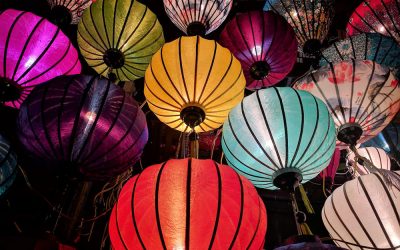
How To Say Different Colors In Chinese And What They Mean
Jul 14, 2024
Get 2-week FREE Chinese Classes
Original Price: ¥ 600

Unsupported Browser Detected. It seems the web browser you're using doesn't support some of the features of this site. For the best experience, we recommend using a modern browser that supports the features of this website. We recommend Google Chrome , Mozilla Firefox , or Microsoft Edge
- National Chinese Language Conference
- Teaching Resources Hub
- Language Learning Supporters
- Asia 21 Next Generation Fellows
- Asian Women Empowered
- Emerging Female Trade Leaders
- About Global Competence
- Global Competency Resources
- Teaching for Global Understanding
- Thought Leadership
- Global Learning Updates
- Results and Opportunities
- News and Events
- Our Locations
Chinese Language
Myths and facts.
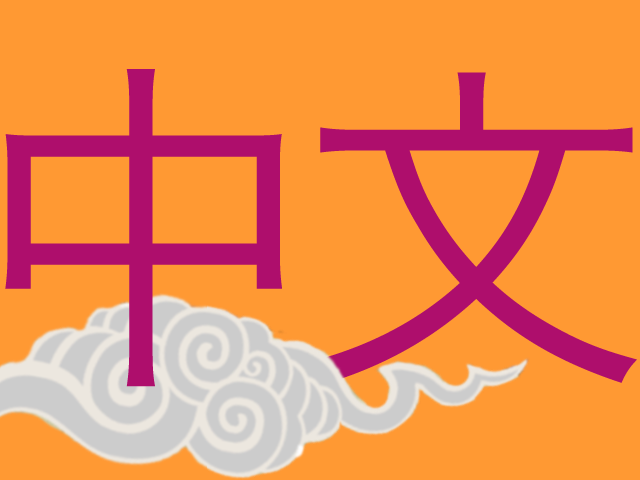
Few things in Chinese culture are more widely misunderstood outside of China than the Chinese language. The Chinese write very differently from us and indeed from all other literate societies in today's world except for Japan and Korea (which continue to make partial use of writing borrowed from China long ago). Even to the untutored eye, Chinese characters are not an alphabet, though many Americans who want to ask about them do not know what term to use for them, and questions are often asked such as, "Is it true that the Chinese alphabet … well, writing … I mean pictures, well … you know what I mean … they're very pictorial, aren't they?"
Because of the obvious radical difference between the way that the Chinese write and the way that we write, many myths have grown up, not just around China's writing system, but around its language as a whole and around China's people. Indeed, people often say that the Chinese write in pictures. Many believe that Chinese is a monosyllabic language, which presumably means that every word in Chinese consists of a single syllable, like the English words but, aim, quick, work, crime, laugh, and unlike the words although, objective, rapid, employment, transgression, guffaw. Many believe that, because they write similarly (in part), Japanese, Korean, and Chinese people are related. Many assume that because of their language, the Chinese think in a way that is radically different from our way of thinking. Regarding modern Chinese, a common myth holds that the Communist government has done away with Chinese characters and has substituted a brand new alphabet that all people now use instead of characters. It is further believed that this supposed change has been tantamount to abandonment of the Chinese language itself. In addition, some believe that the Communist government has wiped out the various Chinese dialects.
Each of these beliefs and assumptions is false. Each of them is in its own way outrageous, since taken together they suggest that the capacity for language among the world's largest national-ethnic group is somehow different from that of all other human groups, a suggestion for which there is no evidence. To examine these unhelpful myths thoroughly would require greater scope than this short essay will permit. But in the following pages, I shall outline some basic facts about the Chinese language. In doing this, I shall try to correct the myths that I have just listed.
Chinese belongs to the Sino-Tibetan language group. Sino-Tibetan is a major genetic grouping of languages like the Indo-European family to which English belongs (along with German, French, Hindu, etc.). The Sino-Tibetan speech community stretches from northeastern India to northeastern China, and its billion-plus speakers are found in Southeast Asia, South Asia, and East Asia. Chinese itself is not a single language, but a language family like the Romance language family to which French, Spanish, Italian, Romanian, and Swiss Romansch belong. Like the Romance languages, the Chinese languages are mutually unintelligible (that is what makes them different languages). But, because they share a common history and a good deal of common vocabulary and grammar, it is much easier for a speaker of one Chinese language to learn another Chinese language than for a complete outsider to do so. Again, this is true of the Romance languages as well. The Chinese languages referred to here are the famous Chinese "dialects": Cantonese, Shanghai, Fukienese, etc. Because speakers of one of these "dialects" cannot understand speakers of another of them, the "dialects" are as much real languages as are the Romance languages.
There are two ways, however, in which the analogy to the Romance languages is inaccurate. Most of the Romance languages are identified with separate independent countries and bear a name related to their place of "origin." There is no such political identification of nation with language in China. Politically and ethnically, China has retained the ideal of unity for well over two millennia. Although at times China has been divided by conquest and civil war, the divisions have never identified parts of China as separate nations, and the language groups of China have never been a rallying point for political or military separatism.
The other important difference between the Romance languages and Chinese lies in China's writing system. After the spread of Roman civilization during the expansionist years of the Roman Empire, Romance dialects grew to a position very much like that of the Chinese "dialects." Each region of the Roman world had a language that was Romance in origin and in vocabulary and grammar, but that had become incomprehensible to speakers of other Romance "dialects" through linguistic change and influence from the languages of the peoples who preceded the Romans in that area. Yet, although the languages of the various areas were so different, the written language was relatively uniform. That written language was, of course, Latin, the standard language of Rome. Latin retained its standard form for a very long time because of the prestige of Rome first as a political and then as a religious capital, and because of the low rate of literacy prevalent in pretechnical societies. Once Rome's power began to decline and the independence of the outlying areas increased, people more and more wrote as they spoke, using the symbols of the Roman alphabet to reflect their own pronunciations and way of forming words instead of those proper to Latin. Reflecting speech is a natural thing for an alphabet to do, since alphabets are a phonetic way of writing. Because Chinese is not alphabetic, its writing does not reflect differences and changes in speech. Even though two speakers of different Chinese languages cannot understand each other (and thus may have to resort to a foreign language such as English for oral communication), they can write to each other and thereby understand each other. The ways that they read aloud what they have written will differ almost completely, but the meaning of what has been written will be identically clear to each. Written Chinese reflects the vocabulary and grammar of the most broadly used Chinese oral language. Speakers of the nonstandard Chinese languages learn this vocabulary and grammar, often pronouncing the words in their own local ways, when they learn to read and write. In short, the written language of China is uniform despite China's actual language diversity and the mutual unintelligibility of the several Chinese languages.
The earliest origin of this writing system was in fact pictorial. Early characters dating from perhaps three thousand years ago illustrate how Chinese writing began.
But this early start with pictorial writing was quickly abandoned. It is difficult for pictures to represent abstract thoughts, and different people's drawings of the same object may differ greatly. It is simply cumbersome to express lengthy messages by pictures. As writing became more common and as the nature of written material became more diverse, Chinese writing grew more and more stylized and less pictorial. In the third century, B.C.E., Chinese writing was officially standardized to a form that is not too distant from today's Chinese writing. Since that time, the pictorial origins of Chinese writing have been largely obscured by the uniformity imposed on the writing to make it more efficient.
The pictures are evident only to those who have been informed that pictures are present. Much more important than graphic representation in written symbols has been the combination of an element in a character that suggests the pronunciation at the time of the character's creation and the one that indicates something about the semantic category of the meaning (i.e., human, mechanical liquid, insect, etc.).
Chinese characters in their modern form remain the only regular medium for writing standard Chinese in the world today. In modern China, some of the most complex or frequently used characters have been simplified by reducing their number of "strokes" or lines, in order to make them easier to learn to read and write. Furthermore, some of the least frequently used characters have been merged into a single character. This simplification of the writing in China has been accompanied by a massive effort at literacy training and an intensive campaign to promote Mandarin, the standard dialect, as the national language. The results of these campaigns have been outstanding. China's literacy rate has risen from between twenty and thirty percent to between eighty and ninety percent, a remarkable achievement for the nation with one of the most difficult writing systems to learn. Along with the spread of literacy in China has been the extension of the use of Mandarin as the national spoken language, and the adoption of a standard spelling system called Pinyin, which uses the Roman alphabet to spell the pronunciation of Chinese characters. Pinyin, officially replacing a variety of older, unstandardized romanization systems, is used as a reference tool in dictionaries, as a supplement to characters on signs and titles, and as the means of introducing standard pronunciation of characters to primary school first graders. In 1979, China's news agency began using the Pinyin spellings of names and places in dispatches, and Americans had to get used to Mao Zedong and Zhou Enlai instead of the more familiar Mao Tse-tung and Chou Enlai. Some American newspapers mistakenly reported this adoption of the Pinyin system as a decision to abandon characters for the alphabet. Although there are some in China who advocate such a move, and although such a change is contemplated by planners of very long-term policy, there is no likelihood of it occurring soon.
China has thus not followed the lead of Japan in reorganizing its writing system. Japanese writing incorporates both Chinese characters and symbols that have a sound value like an alphabet (called a syllabary). Because of their syllabary, the Japanese are able to learn much more quickly than the Chinese to write their language intelligibly, even if not elegantly. (Elegance and style require the use of characters in Japanese.) Japanese differs from Chinese not only in its writing, but in almost all other aspects as well. Along with Korean, Japanese is related to the Altaic language family, which includes Turkish, but not Chinese. In Japanese there is a highly elaborated system of hierarchical expression for speaking with persons of different social levels, something Chinese does not have. In Japanese, verbs come at the end of a sentence; in Chinese they come in the middle. In Japanese, the characters may be read with words of several syllables. In Chinese every character is read with a single syllable. To sum up, although the two languages both employ written characters, their differences outweigh their similarities, and Americans should not assume that the two languages have much in common.
Each Chinese character is pronounced as a single syllable. This is the source of the myth that Chinese is monosyllabic. The truth is that most Chinese words are polysyllabic and are written in clusters of characters. Most words in modern Chinese are two syllables (two characters). Thus, ming means "clear, bright" and bai means "white, blank". Put together, mingbai means "understand, clear," and onlymingbai can be used to mean "understand." Ming can never be used alone, and bai means something different when it is used alone.
The most troublesome myth to deal with is the one that maintains that, because their language is structured differently from ours, the Chinese necessarily think differently from Westerners. One of the silliest versions of this myth that I have heard is the claim that science cannot be practiced in Chinese because that language is not "scientific." (Since all languages are about equal in their inconsistencies and irregularities, it is difficult to know what the word "scientific" means when applied to a language.)
The idea that Chinese and Westerners think differently because of linguistic differences is, in my opinion, unconvincing. Indeed I find very little hard evidence to prove that language and thought are intertwined in any culture. Certainly, our individual thoughts and the specific language in which we express them are inseparable. But that does not mean that what we say in our own language may not have direct equivalents in another language if what we say happens to be spoken by someone with our same aims.
Some implausible assertions about the way the Chinese language makes the Chinese people think include: the Chinese do not distinguish between one and many because their words are not marked for singular and plural; the Chinese do not know the difference between definite and indefinite because their language lacks articles; the Chinese do not always understand the differences between past, present, and future because their verbs are marked for change and completion rather than directly for time reference; the Chinese do not clearly understand the difference between counterfactual statements and possible ones (e.g., "If I were you, I would …" vs. "If I go, I will …" because their language does not have any formal ways to distinguish the two. If any of these assertions were true, it is unlikely that the Chinese race would have survived three or four millennia, since they would be always in the wrong place with the wrong objects and quite uncertain about whether they were there or not.
Most such misunderstandings come naturally from an inadequate understanding on the part of non-Chinese who are attempting to analyze Chinese. Some of it also comes from Chinese speakers who inadequately comprehend Western languages.
There is, however, one relationship between thought and language which is not myth. That relationship is exemplified in Chinese by the tendency of ordinary Chinese to understate, or to convey meaning indirectly. Not only do the Chinese not share our predilection for expletives of a superlative intent such as "Terrific!" "Great!" "Fantastic!" and the like, but they frequently describe situations through understatement, double negatives, apparent vagueness, euphemism, and allusive language. In negotiation, an agreement to a proposal may be given as wenti buda, which literally means "The problems are not great." This tendency is related to formulaic expressions in Chinese such as bucuo "no error" = "right you are," bushao "not few" = a lot," chabuduo "off not much" = "approximately." Similarly, a denial may take the form of "Perhaps it's not convenient" or "Possibly the time isn't right" for a refusal to respond to a proposal that is seen as impossible to implement. Criticism is often given indirectly, but effectively. Frequently historical allusion is used to describe a situation that the critic does not like, and the reader or hearer is left to infer who in contemporary life is being castigated. The former head of state, Liu Shaoqi, was labeled as "China's Khruschev" in the months before he was publicly identified and brought down. The late premier, Zhou Enlai, was identified with Confucius in the Anti-Confucius/Anti-Lin movement of the early seventies. Naturally, political labels and symbols form a major part of the vocabulary of both criticism and approbation, though it seems that the vocabulary for identifying deviants (right winger, right deviationist, capitalist roader, ultra-leftist, those who use the red flag to oppose the red flag, etc.) is much greater than that for identifying model citizens (as is equally true of the language use of the Christian Church).
It is important to realize that these usages are not new in Chinese society; only the specific terms, such as those with Marxist-Leninist content, are new. The tendencies to indirectness and allusion are ancient cultural traits of Chinese society, and politicians and negotiators were using them as much hundreds of years ago as they are now. This use of language is an expression of a cultural preference for harmonious and positive intercourse among people. It is a cultural expression, not a control of thought by language. Language is simply one of the tools through which a society expresses its character, and it is to be expected, not wondered at, that Chinese society expresses the same characteristics through its language as it does in other cultural forms.
Because the focus of American relations with China has moved from diplomatic sorting out to business connections, there is one area of cultural expression in language that must be mentioned in closing. That concerns the use of a special language for legal purposes. In our society, legal language is so specialized that it alone often carries the difference between one party's satisfaction and the other's in a hotly contested dispute. Our legal profession is a huge body of technocrats trained principally in the wielding of the tool of legal language. It is often noted that China has a tiny number of lawyers (as does Japan) compared to the United States. This is not primarily because Chinese criminal proceedings have failed to allow sufficient protection for defendants (though that has often been true), but because binding relations involving the exchange of money, goods, and services are not sealed in immutable language in China. Rather, contracts lay out basic wishes of both sides and fundamental intents; from our point of view, at least, a great deal is left to the common sense and mutual trust of the parties concerned. That procedure is unobjectionable so long as the expectations and assumptions of the two sides are the same. But troubles may arise when one party's differ from those of the other. Different expectations, of course, are more likely to occur when the parties are from different cultures and where the principal participants do not know each other's languages well.
China's joint-venture law of 1979 is a case in point. That law simply states general principles and does not contain the level of detail that American and other Western business people would consider normal in their own societies. Because of the vagueness of the language used, many businesses hoping for deals in China have held back from entering joint ventures for fear of losing their investment should something not planned for occur.
Misunderstandings related to language—particularly those that lead to troublesome problems—come from cultural misperceptions and language incompetence, not from the different structures of the two languages that two peoples speak. So long as we in America remember that Chinese is one of the world's human languages and make intelligent provisions for the training of enough Americans in the use of that language, we face little problem from the uniqueness of the way that the Chinese speak and write. But if we continue our historical ignorance of both China's culture and language, we doom ourselves to a very conflicting relationship.
Author: Timothy Light.
You Might Also Like
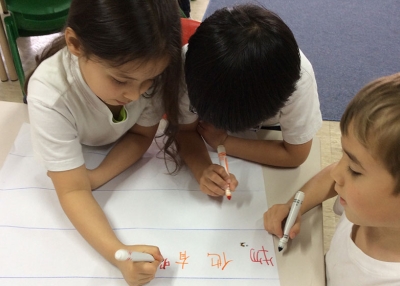
The Future Speaks Chinese
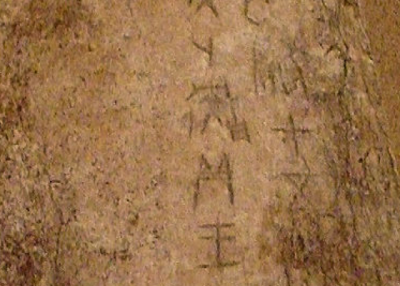
Writing and Technology in China
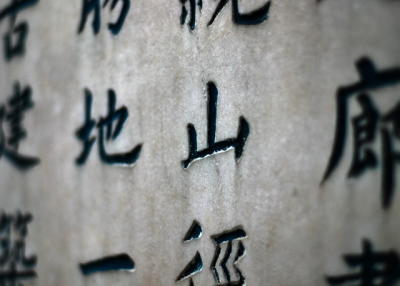
Chinese Writing
Additional background reading on asia.

Religion in the Philippines

China’s World Cup 'Craze'
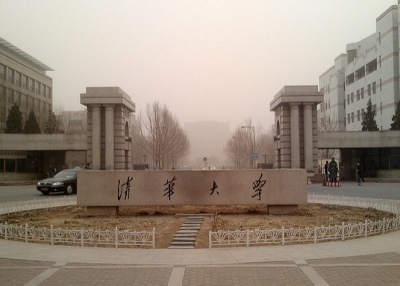
China's Education System: The Oldest in the World
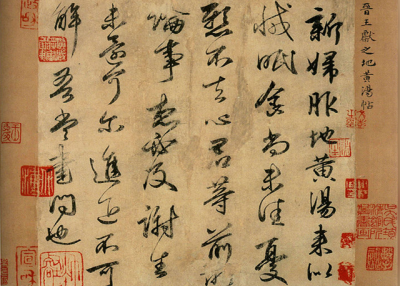
Revelations from the Brush
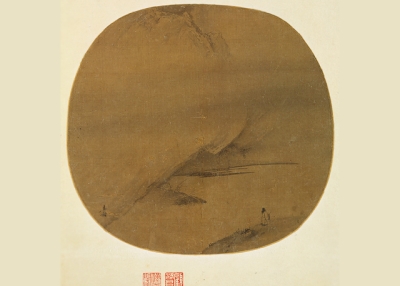
The Three Teachings

Women in Traditional China

Tale of Kiêu

Understanding the Geography of China
The Mongol Dynasty

Shahnama: The Book of Kings

Religion in Vietnam

Confucianism
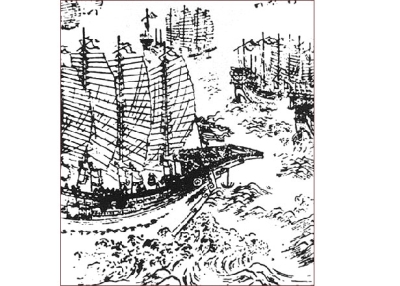
Chinese Trade in the Indian Ocean

Win a Trip to China!

Math, Science, and Technology in India
Chinese calligraphy.

Chinese Literature: Essays, Articles, Reviews (CLEAR) is published annually.
CLEAR journal is a leading resource for Chinese Literature academic discussion worldwide and has been published for over 30 years.
Click below for two most recent CLEAR journal Table of Contents.
CLEAR History
CLEAR was created based on discussions between eight scholars‒Eugene Eoyang, Joseph S. M. Lau, Leo Ou-fan Lee, Wu-chi Liu, Irving Lo, Ronald Miao, William H. Nienhauser, Jr., and William Schultz‒from the universities of Arizona, Indiana and Wisconsin spread over the early months of 1977. The journal was formally launched at a meeting on 18 March 1977 in Irving Lo’s living room in Bloomington, IN. Over the next year the founding editors, Eoyang and Nienhauser, received grants from the American Council of Learned Societies, the Association for Asian Studies, and the three affiliated universities as well as from members of the original editorial board (especially Elling Eide and Irving Lo) and individuals (especially Nancy C. Ing), allowing the production of the first two issues in 1979. Over the years CLEAR has published symposia, essays, articles, reviews and occasional forums on all aspects of traditional and modern Chinese literature. It is still the only western-language periodical devoted to Chinese literature. Having gained a worldwide reputation and audience, CLEAR now appears annually in December under the direction of editors Haun Saussy, Michelle Yeh and Rania Huntington.

Characters on the website were written by Chow Tse-tsung (1916-2007). Copyright © 2012-2024 by CLEAR | ALL RIGHTS RESERVED | International Standard Serial Number (ISSN) #0161-9705
Free printable resources to help you write better Chinese

Chinese character practice paper containing a grid that resembles the character for rice, 米.
A4 Paper: PDF | PNG US Paper: PDF | PNG

Chinese character practice paper containing a grid that resembles the character for field, 田.

Remove the stabilizers and go freestyle in the empty grid.

Essay Paper
The standard 20x20, 400 character essay writing paper for knuckling down and writing your Chinese homework.
Another Mandarin Poster Resource
Ohio State nav bar
The Ohio State University
- BuckeyeLink
- Find People
- Search Ohio State
The Chinese Essay
Edited and translated by David E. Pollard
Reviewed by Charles A. Laughlin MCLC Resource Center Publication (Copyright January 2004)

David E. Pollard, editor and translator. The Chinese Essay . New York: Columbia University Press, 2000. 372 pp. US $65.00, ISBN: 0-231-12118-0 (cloth); US $24.50, ISBN: 0-231-12119-9.
The Chinese Essay is the first anthology to provide a comprehensive introduction to Chinese literary non-fiction prose from earliest times to the present. Comparable collections in print, such as Richard Strassberg’s Inscribed Landscapes: Travel Writing from Imperial China and Sang Ye’s Vignettes from the Late Ming, are restricted to the premodern period, and until now modern essay translations (often Pollard’s) have only appeared scattered in journals like Renditions and Chinese Literature and in more general anthologies like The Literature of the Hundred Flowers , The Columbia Anthology of Modern Chinese Literature , and monographs devoted to individual authors such as Zhou Zuoren and Yu Pingbo. The selections in The Chinese Essay represent most of the best-known Chinese essayists, through some of their most anthologized and well-known works. Never have premodern and modern essays been placed next to each other, and never has the considerable tradition of the modern Chinese essay been presented so richly. Pollard’s effort is commendable, and should be interesting not only to the general reader but a great boon as well to instructors of courses devoted to Chinese literature or to the essay across cultures.
Pollard has translated all of the essays himself. As a much-published translator, and author of A Chinese Look at Literature: The Literary Values of Chou Tso-jen (Zhou Zuoren, the pioneer of the modern Chinese literary essay), there could hardly be a better choice for this task. Not only are the translations faithful to the semantic meaning of the original texts (as far as I can tell), but Pollard’s clipped, dry, and often humorous style is also often perfectly suited to the spirit of the essays presented here. The anthology also includes portraits or photographs of many of the authors as well as their calligraphy or handwriting. Though not numerous, these illustrations very effectively convey the love of writing and the emphasis on personal style that tie together the many phases of the Chinese literary essay’s long tradition.
Because of the infancy of the study of the Chinese essay in English, an anthology like this and its introduction are potentially seminal statements, situating this genre in the field of Chinese cultural studies in general, justifying our interest in it, and pointing the way to avenues of further inquiry. But if The Chinese Essay answers the question, Why publish or read such an anthology?, it does so only meekly. Pollard observes that there has not been a general anthology of Chinese essays published since Herbert Giles’ 1884 Gems of Chinese Literature , so his argument begins from a gap or lack in the representation of a genre. Rather than engage with this lack critically, Pollard goes on to assert two reasons for it, almost as if to justify it, namely, the inherent difficulty of representing and discussing linguistic style in a foreign language (but why should this not have been a hindrance to the translation and circulation of other Chinese literary genres?), and the decline in prestige of the essay in the English-speaking world. Thus, in effect, rather than answering the question of why he is offering this anthology now, Pollard is simply providing convincing reasons why it had not been done before. What is missing from this explanation is why the prestige of the essay in modern and contemporary China, unlike the English speaking world, has not declined. If this book could bring the English reader around to understand the power and agency of the essay in contemporary China, despite all that has been said in our field about the overwhelming importance of fiction, it would create more than enough motivation and capacity to appreciate the importance of the contents of this anthology on its own terms, even for a general reader.
The general reader, moreover, seems to be the main target of this anthology. Yet this general-audience orientation is belied by the inclusion of Chinese characters for authors’ names and titles to works. Indeed those who would benefit from the Chinese characters (most of the likely audience of this collection) will generally want more bibliographical information, as well as some engagement with scholarship in the field such as Yu-shih Chen’s Images and Ideas in Chinese Classical Prose: Studies of Four Masters , Chih-p’ing Chou’s Yuan Hung-tao and the Kung-an School . In addition to a more in-depth and informative introduction, I think the book as a whole could have included more scholarly apparatus, including a less sketchy, multi-lingual bibliography, without harming its appeal to a general audience.
If Pollard assumes anything about his audience, it is that they are familiar with the European prose essay, which I think leaves some room for doubt especially with respect to the younger generations. The European essay was of course an important context for the modern Chinese essay, but Pollard is probably putting unnecessary emphasis on features peculiar to the European tradition (“absence of dignity,” “refining and directing sensibilities to create a polity that was new and particular,” “entertainment value,” [p. xii-xiii] “independence of thought,” [p. 7] etc.) in the effort to define the Chinese essay for the general English reader. It might have been more effective and engaging to discuss what prose essays in China are like and what they are used for, rather than comparing them (often unfavorably) to the European tradition that the reader may not be very familiar with anyway.
After detailing in the Preface negative aspects of traditional Chinese culture and literary conventions that explain why premodern Chinese essays do not resemble those of Montaigne and Bacon, Pollard does go on to list what he feels are some of the positive aspects of the Chinese essay in general: “The qualities are on the one hand common to mankind, on the other particular to Chinese literary arts. The first kind includes the expression of character in the writer, either impressively strong or appealingly weak; the expression of sentiment, usually to commemorate friends and relatives; nostalgia for past times; appeals for justice and compassion; pleasure in diversions. The second kind concerns the musicality of the language, a prime and often, regrettably, the prime requirement for approval.” Then he goes on to explain why musicality cannot be translated. Thus, all of the positive aspects of the premodern Chinese essay that are particular to Chinese literary arts are here lost in translation, and what is left is a variety of expressions of ideas and sentiments. I am not certain, but a general English readership (which has already proven itself lukewarm to Chinese fiction and poetry in translation) may not be inclined to delve into this anthology thus described. Why not say more about the extraordinary personalities and intellectual genius evinced in included works by Tao Qian, Han Yu and Su Shi, Lu Xun, Zhou Zuoren, Feng Zikai and Zhang Ailing? Why not talk about some of the larger cultural themes for which the Chinese essay served as the principal vessel, and which through the essay traditional and modern writing are linked—the cultivation of the art of living, the struggle between transcendent and worldly values, or the contrarian resistance to “political correctness” of every imaginable kind?
In an anthology with such broad coverage but short length, the editor is obliged to explain his principles for selection, and Pollard very honestly acknowledges that it would have been impossible to adhere to a single principle. I applaud his insistence that personal taste—an important theme in ancient and modern essays—was his principal guide. This accounts for his enthusiastic inclusion of essays by Gui Youguang (1506-1571) despite their criticism by the modern essayist Lin Yutang, his exclusion of Lin Yutang’s own essays, and no doubt as well the inclusion of contemporary writer Yu Qiuyu, well-known for his popular, fictionalized imaginings of significant historical moments, over those with strong links to the Republican period essay tradition like Wang Zengqi, Zhang Zhongxing and Ji Xianlin. On the other hand, in his note on sources Pollard states that “the classical prose section consists almost entirely of anthology pieces; they had to be so in order to represent the classical heritage” (369). He also states that he felt he had to include certain perennial classics (both traditional and modern) that may not have been among his favorites, even when they were available in other collections. In saying this Pollard makes it clear that he intends this collection to represent the Chinese essay with some authority and self-sufficiency, which seems out of step with his claim of using personal taste as his guide. Nevertheless, I think the resulting balance between personal taste and the need to reflect the received canon makes for a selection that both makes good reading and a good textbook.
Though Pollard alludes to wide reading in anthologies, the only one he cites is a 1987 publication, implying that anthologies tend to select the same works for each author. I am currently in the midst of a survey of anthologies of premodern essays that so far suggests to me that selections vary significantly across eras (Qing, Republican, Taiwan, Early PRC, recent PRC) for various different reasons. For example, premodern anthologies such as the seventeenth-century Guwen guanzhi generally favor formal essays of serious import that cleave to Confucian values, while more modern collections increasingly favor heterodox views, and include more “individualistic” essays on small, private matters. This is in part due to the gradual acceptance in the late imperial period that informal or casual writing possesses its own aesthetic value that can be appreciated by posterity. Moreover certain Republican period publications such as Shen Qiwu’s 1932 Jindai sanwen chao (A selection of early modern essays), Zhang Dai’s Tao’an mengyi (Dreamlike remembrance) edited with prefaces by Yu Pingbo and Zhou Zuoren, and Shi Zhecun’s 1935 Wanming ershi jia xiaopin (The Late Ming xiaopin: twenty masters) exerted an influence on the modern Chinese essay, and these could at least have been mentioned. The reader who wants to explore the Chinese essay in more detail would have benefited greatly from some guidance as to which anthologies are best, and which exerted the greatest influence.
It is interesting that The Chinese Essay , covering both premodern and modern periods, devotes the lion’s share of its space to the modern period. There are about forty pages devoted to ancient-medieval times (through the Song Dynasty), forty to late imperial times (Ming and Qing dynasties), about 170 to the first half of the twentieth century, when the modern essay came into its own, and ninety to the post-war period; thus over seventy percent of this collection is from the past 100 years. The slant in favor of modern essay has the effect of showing the reader the pre-modern essay through modern eyes, which I applaud, but the editor could have been more forthcoming about this in the introduction. If, for example, the reader took The Chinese Essay to be a general survey of the Chinese essay from antiquity to the present, it would give the impression that the essays of the twentieth century are much more important than those in the more than two millennia before. Modern Chinese essays can often be understood better through their relationships (sometimes conspicuous) with premodern literary or philosophical trends, and these relationships do not in themselves lessen the modern texts’ “modernity,” but help constitute it. In this respect, if it was in fact Pollard’s intention to present premodern essays primarily as precursors to modern ones, he could have done more in the introduction, commentary and translator’s notes to emphasize which kinds of premodern texts have particularly exerted agency in modern times, which modern texts manifest their influence, and how.
Turning to the modern period, the cavalier dismissal of prose literature under leftism and socialism is unfortunate; the development of the genre of reportage is misrepresented in the introduction as originating as anti-Japanese propaganda in the War Against Japan and developing in Communist China only to extol the Party (p. 20), and no mention is made at all of prominent lyrical essayists within the socialist camp like Qin Mu, Yang Shuo and Liu Baiyu, leading to the mistaken impression that all socialist prose is reportage. The exclusion of all of this material detracts from the anthology’s authority as a survey of the genre. As I have argued elsewhere, reportage may be looked upon as the leftist answer to the essay, but it originates as a form of revolutionary social critique in the 1930s, and its use in the War Against Japan is much broader than just propaganda. Moreover, though it would not be appropriate to include examples in the anthology, it should have been pointed out in the introduction that reportage made an important revival in the 1980s and beyond in the hands of Liu Binyan, Su Xiaokang and others; the concern for the environment that Pollard so admiringly observes in the contemporary Taiwanese essay has been one of the major themes of mainland Chinese reportage literature for at least ten years.
Another ramification of the editor’s inattention to the condition of modernity is Pollard’s explanation of the Chinese term sanwen . Pollard presents the Chinese concept as stable and unchanging, and explains its meaning entirely in terms of contrasts with European concepts. But the term sanwen was not used to denote a literary genre until modern times and even now critics and literary historians struggle with the equivocal nature of the term (“literary genre” vs. “all kinds of writing not in verse form”). It would have been helpful to put more emphasis on the particular modes or genres that the premodern works belong to (memorials to the emperor, philosophical treatises, formal and informal correspondence, prefaces and colophons, travelogues, epitaphs, biographies, etc.). This is not to say that this variety of forms ought not to be placed in a more general category under the term “sanwen,” but it is regrettable that the modern cultural process by which this was achieved receives no emphasis or attention.
Pollard’s concern here with limiting the scope of the collection to a describable form (“a free-standing, self-contained, relatively short composition” that “surfaced in the stable empire of the Han dynasty”) is, I think, unnecessarily limiting, and in fact might hamper the uninformed reader’s understanding of the broader context of the Chinese essay’s evolution. On page 2 of the introduction, Pollard makes a convincing, if somewhat defensive, argument for excluding the writings of the ancient Daoist philosopher Zhuang Zi. However, informed readers reading through the selections throughout both premodern and modern periods will easily discern the pervasiveness of Zhuang Zi’s influence in this genre. Indeed, Zhuang Zi’s playful spirit and philosophical critique of Confucianism may be described as one of the principal characteristics that distinguish the Chinese informal essay, which was the principal model for the modern literary essay, from formal prose. Similarly, though he devotes a page or so to the tremendous significance of Sima Qian’s Records of the Grand Historian as a model for the spirit and the letter of prose writing, Pollard excludes it because, “[being] a work of objective history, however, or at least attempting to be such, the author’s own comments are minimal” (4), implying that self-expression is working as a criterion for selection (see also his comments on page 5 about Cao Pi’s use of the term qi to denote “the physical underpinning of the distinctive character, or personal stamp, that an author’s writing is imprinted with”), but that self-expression can only be manifested in the form of direct “comments.” How many readers of even a few biographies from the Shi ji , though, come away from it without feeling that Sima Qian has very forcefully expressed his own views through them? A similar example is the exclusion of the Six Dynasties collection of anecdotes, Shishuo xinyu (New account of tales of the world), of which a translation by Richard Mather was published a generation ago. Like Zhuang Zi and the wealth of apocryphal writings of the Daoist tradition, Liu Yiqing’s New Account , which describes remarkable events, actions and utterances of the medieval aristocracy, though perhaps not fitting. Pollard’s criterion, was an important and frequently imitated foundation of the Chinese essay tradition.
The introductions to the sections on each author, though at times impressionistic, often include insightful analytical meditations or epigrammatic summaries of the author’s style that strike me as most apt and useful. However, I am not sure it is necessary for Pollard to separately include “commentary” and “translator’s notes” (sometimes both) before or after certain works in addition to the introductory sections on each author. Often the translator’s note will emphasize interpretation in a cross-cultural context, as in the case of Zhu Ziqing’s “View from the Rear” (Bei ying), but I feet that such considerations would have been much more effectively delivered in a critical essay that treats a variety of issues of style or interpretation, or this could have been integrated with the historical overview given in the introduction. The second of the three paragraphs of commentary on Zhuge Liang, for example, is almost identical in content to the last page of Zhuge Liang’s own text; the first paragraph of the “Translator’s Note” to Han Yu’s “Address to the Crocodiles of Chaozhou” simply reiterates the corresponding section of the biography of Han Yu given in the “Commentary” two pages before. Together with the functional overlap of the preface and introduction, the commentary and translators notes make The Chinese Essay overly complex in its multilayered contextualization of the translations and thus unnecessarily confusing.
Apart from stealing thunder from the essays themselves, the volume of notes and commentary raises an important question that plagues the translation of Chinese literature into English in general: can these texts not speak for themselves? If this collection really is intended for a general readership, I think it is safe to assume that such readers would be more interested in texts that speak directly to them without a great deal of explanation from the translator. And it is not only a question of “how much” explanation would be needed to supplement a “raw” translation; the act of translation itself imparts meaning. If scholarly semantic fidelity were relaxed to the degree that items were made easier for the general reader to relate to with a reduced amount of explanation, the potential impact of this book would be greatly enhanced.
The Chinese Essay does nevertheless fill a crucial gap in materials for courses on Chinese literature in translation. While most scholars in the field of Chinese literature are probably not going to set up a course exclusively devoted to the essay even with a comprehensive anthology available, the selections in this book would mix well with other genres and materials in a more general course. I could see using it this way in either premodern or modern Chinese literary courses, but more likely for the modern period because of the greater concentration of material there.
Charles A. Laughlin Associate Professor, Chinese Literature Department of East Asian Languages and Literatures Yale University
- Cambridge Dictionary +Plus
Translation of essay – English–Mandarin Chinese dictionary
Your browser doesn't support HTML5 audio
- I want to finish off this essay before I go to bed .
- His essay was full of spelling errors .
- Have you given that essay in yet ?
- Have you handed in your history essay yet ?
- I'd like to discuss the first point in your essay.
(Translation of essay from the Cambridge English-Chinese (Simplified) Dictionary © Cambridge University Press)
Examples of essay
Translations of essay.
Get a quick, free translation!

Word of the Day
left luggage
a special room or other place at a station, airport, etc. where bags can be left safely for a short time until they are needed

Simply the best! (Ways to describe the best)

Learn more with +Plus
- Recent and Recommended {{#preferredDictionaries}} {{name}} {{/preferredDictionaries}}
- Definitions Clear explanations of natural written and spoken English English Learner’s Dictionary Essential British English Essential American English
- Grammar and thesaurus Usage explanations of natural written and spoken English Grammar Thesaurus
- Pronunciation British and American pronunciations with audio English Pronunciation
- English–Chinese (Simplified) Chinese (Simplified)–English
- English–Chinese (Traditional) Chinese (Traditional)–English
- English–Dutch Dutch–English
- English–French French–English
- English–German German–English
- English–Indonesian Indonesian–English
- English–Italian Italian–English
- English–Japanese Japanese–English
- English–Norwegian Norwegian–English
- English–Polish Polish–English
- English–Portuguese Portuguese–English
- English–Spanish Spanish–English
- English–Swedish Swedish–English
- Dictionary +Plus Word Lists
- English–Chinese (Simplified) Noun Verb
- Translations
- All translations
To add essay to a word list please sign up or log in.
Add essay to one of your lists below, or create a new one.
{{message}}
Something went wrong.
There was a problem sending your report.
Chinese Grammar Checker
Try typing Chinese below!
Install Sapling to use it on any website.
Looking for English or another language?
- First, make sure you see the Sapling badge in the bottom right of the editor.
- Are you already logged in or already have Sapling installed as a browser extension? If so, your logged in user setting may be overriding the language setting on this page.
- Sapling works best with realistic errors. That means errors that are frequently made in practice as opposed to intentional errors.

Essay Series
- Expert Speak
- Commentaries
- Young Voices
- Issue Briefs
- Special Reports
- Occasional Papers
- GP-ORF Series
- Books and Monographs
Browse by Topics
Progammes & centres.
- SUFIP Development Network
- Centre for New Economic Diplomacy
- Centre for Security, Strategy & Technology
- Urban Studies
- Neighbourhood Studies
- Inclusive Growth and SDGs
- Strategic Studies Programme
- Energy and Climate Change
- Economy and Growth
- Yerevan Dialogue
- Raisina Dialogue
- Cape Town Conversation
- The Energy Transition Dialogues
- CyFy Africa
- Kigali Global Dialogue
- BRICS Academic Forum
- Colaba Conversation
- Asian Forum on Global Governance
- Dhaka Global Dialogue
- Kalpana Chawla Annual Space Policy Dialogue
- Tackling Insurgent Ideologies
- Climate Action Champions Network
- Event Reports
- Code of Conduct
- ORF Social Media Advisory
- Committee Against Sexual Harassment
- Declaration of Contributions
- Founder Chairman
- Work With Us
- Write For Us
- Intern With Us
- ORF Faculty
- Contributors
- Global Advisory Board
- WRITE FOR US

China’s belt and road initiative: Implications in Africa
Author : L. Venkateswaran
Issue Briefs Published on May 10, 2023 PDF Download

Over the last two decades, China has established a significant economic presence in most African countries. Its lucrative economic investment package, flexible political approach, and focused big-ticket development projects under the Belt and Road Initiative (BRI) provide an ostensibly massive opportunity to African countries. However, the unilateral nature of the initiative, the lack of transparency and accountability to African countries, and the absence of projects that directly benefit locals have raised suspicions and fuelled local resentment. There are increasing instances of African countries cancelling or postponing BRI projects over rising debt concerns. This brief discusses the nature of the BRI, specifically in the African continent, and its advantages and disadvantages for the host countries.
Venkateswaran Lokanathan, “China’s Belt and Road Initiative: Implications in Africa,” ORF Issue Brief No. 395 , August 2020, Observer Research Foundation.
- Introduction
The ongoing COVID-19 pandemic has not only created a global public health crisis but is also threatening to accelerate a global economic slowdown and trigger conflicts between nations over access to resources. Almost every nation has been impacted negatively – either by the outbreak of the virus, or by the sudden disruption of global trade flows, or by rising bilateral tensions. More than 50 percent [1] of the international community has demanded an investigation into the origin and spread of the virus, putting the spotlight firmly on China.
Several questions have been raised regarding China’s strategic intentions, its claims of a “peaceful” global rise, and the objectives of its flagship global initiatives such as the Belt and Road Initiative (BRI). [2] , [3] Is the BRI a purely economic construct to enhance international cooperation as China claims, or a geopolitical tool to enhance global strategic influence as its strategic competitors suspect? Does the BRI genuinely benefit participating local countries or only serve to enhance China’s economic benefits? Is China pursuing it unilaterally or co-opting other countries into the initiative?
To answer these questions, this brief takes up the BRI in Africa as a case study, since China’s presence has grown rapidly across the continent. China is an emerging global power, with claims of a “peaceful” outlook in a continent with over 50 countries possessing rich natural resources but relatively poor governance track record and low standards of living overall. How this initiative plays out can provide critical insight into the country’s true intentions. Will China be hard-nosed or more accommodating with its strategy in Africa?
- China’s Presence in Africa
With its involvement in the infrastructure sector beginning in the 1960s, China has established an active presence across the African continent. Trade between China and Africa has surged drastically from US$1 billion in 1980 to US$128 billion in 2016. Since 2000, it has provided cumulative loans of US$143 billion in Africa, with half of them given over the last four years alone, making it Africa’s largest bilateral creditor. [4] At the 2018 Forum for China–Africa Cooperation in Beijing, China offered Africa US$60 billion for development financing until 2021. [5]
Financing from western countries or institutions is usually accompanied by strict conditionalities, an inconvenience for poorer African countries. Comparatively, China’s financing strategy—through a combination of grants, aid, and loans (free or at low interest rates) with a generous schedule of return particularly on infrastructure projects—is an attractive option for African countries. Moreover, while the financial crises in the US and the European Union have limited their investments in Africa, China is committed to investing more in the continent. It has also adopted a practical approach, not a value-based one, while dealing with political regimes across the continent. Unlike Western countries, which prefer dealing with transparent and accountable democracies, China has an “all-inclusive” approach and deals with regimes without any pre-set conditions. Since the country has not taken any political sides, Chinese companies have managed to maintain a low profile and avoid becoming a target of opposing local factions. Additionally, China is engaged in peace and security projects in Africa. It participates in five UN peacekeeping missions in Africa and is the second-largest financial contributor to UN peacekeeping missions, which includes contributing to the African Union Mission in Somalia (AMISOM) and the IGAD South Sudan mediation. [6] Economically, China has a history of fast and successful economic growth, which presents an attractive template for African countries to replicate. It has invested significantly in big infrastructure, industrial and connectivity projects, which are critical requirements for governments across Africa and importantly provide quick delivery, widespread visibility of progress and active governance to the local population, unlike more low-key and less-visible projects such as in training, education or healthcare. [7]
- Belt and Road Initiative
China has made significant inroads into Africa under the BRI. At a bilateral level, it has invested in 52 out of the 54 African countries and is poised to enter the 53 rd market in Sao Tome and Principe. According to China’s official statistics, 49 of the 54 countries (i.e. over 90 percent) have already signed MoUs. [8] Geographically, 22 of the 49 countries (nearly 50 percent) are located in West Africa, with East Africa (12 countries), North Africa (nine) and Southern Africa (six) comprising the other 50 percent. [9] The African Union has also signed a Memorandum of Understanding (MoU) on BRI cooperation with China. While MoUs are not legally binding, they formalise Chinese investments in the country, with due acknowledgement from the local government. This smoothens the investment process for Chinese companies in those countries. Moreover, signed MoUs can pave the way for a legally binding agreement.
There are only five African countries—Eritrea, Benin, Mali, Sao Tome, and Principe and Eswatini (Swaziland)—that have neither signed an MoU nor expressed support. However, China continues to push its presence in these countries undeterred. Recently, it started investing in Eritrea’s Koka gold mine. Benin’s President has asked local firm Petrolin and French giant Bollore to “withdraw” from a major rail infrastructure project linking Benin to Niger, to make way for China. [10] Further, China has signed agreements worth US$11 billion with Mali, to finance two cross-country railway projects intended to link the landlocked country to the coast. Meanwhile, Sao Tome and Principe switched allegiance in May 2017, going from recognising Taiwan to accepting the “one-China policy.” On 1 April 2019, it reached an agreement with China for fast-tracking the execution of projects to be funded by China, including direct support for the 2019 General Budget. It is expected that increased Chinese investments will gradually lead some of these countries to sign MoUs or express official support in the future. [11]
In recent years, as China’s presence in Africa has grown, nations have one after another, turned their backs on Taiwan. Eswatini is the only African country that has resisted China’s push and continues to disallow Chinese investments. It continues to remain the only ally of Taiwan in Africa and has not attended recent FOCAC forums.
- Overarching Trends
Five significant trends emerge from China’s BRI projects in Africa. First , China is investing in ports and port areas along the coastline from the Gulf of Aden through the Suez Canal towards the Mediterranean Sea. Of the 49 countries that China claims have signed MoUs or officially expressed support for the BRI, 34 (nearly 70 percent) are located along the coast of Africa—16 in the West, eight each in the North and the East, and two in the South. These include Djibouti Port (Djibouti), Port Sudan (Sudan), Port Said-Port Tewfik (Egypt), Port Ain Sokhna (Egypt), Zarzis Port (Tunisia) and El Hamdania Port (Algeria). The People’s Liberation Army (PLA) Navy has built its first overseas military base in Djibouti, which has been in use since 2017. To serve its strategic interests, China could use its influence over these ports for economic (transport of raw materials, finished goods and labour) and military (surveillance and blockade of overseas and deep-sea maritime traffic) purposes in the future. [12]
Second , China is using its connectivity projects (20 percent of all its projects in Africa including rail and road lines), to link its industrial (10 percent of all its projects including minerals processing) and energy projects (15 percent of all its projects including oil and renewables) in the hinterland of Africa to the infrastructure (nearly 45 percent of all its projects including ports) projects along the African coastline. [13] Together, these four sectors make up nearly 90 percent of its major projects in the 49 countries. For instance, an oil refinery in the north of Sudan is located close to the railway line connecting Port Sudan and Dakar Port (Senegal). Gabes, a hub for petrochemical and phosphate transformation industries in Tunisia, has been connected by a railway line to the Zarzis Port. Belinga Iron Ore is located close to the railway line connecting hinterland Gabon to Santa Clara port in the coastline. An industrial park in Ethiopia is located near the Addis Ababa-Adama Highway, which connects with the Addis-Djibouti railway line connected to the Djibouti port. This enables China to use the maritime route to transport raw materials such as Phosphate, copper, cobalt, gold, iron ore, cocoa, bauxite, coal, lithium, steel, granite and marble back to the mainland, and finished goods and Chinese labour to Africa. [14]
Third , China’s claims that its investments are being tuned to local necessities, in line with its leadership’s oft-repeated “win-win model of cooperation” is only partially accurate. The African Development Bank (ADB) has estimated that Africa’s infrastructure deficit amounts to US$ 93 billion annually until 2021. [15] While the majority of China’s projects in Africa are in the infrastructure sector, it is also beneficial to Chinese companies that are dealing with overcapacity in key sectors such as steel, iron and cement. [16] Moreover, despite China’s projects being executed in consultation with the local governments, [17] the bidding processes for these projects are opaque and bribes are often paid to local officials. Consequently, the local population only occasionally benefits (e.g. access to connectivity projects, jobs in industrial and infrastructure projects) and only after the projects are completed. Many of these projects (particularly energy and industrial ones) require access to key natural resources, requiring them to be located at proximity to these resources. As a result, residents often need to be relocated, causing discontentment amongst the local population. [18] Further, connectivity projects, largely due to their nature of covering geographical distance, invariably result in environmental alterations or encroachment upon already existing human habitation (resettlement). As of now, only around three percent of Chinese projects, in healthcare and education, provide direct benefits to the local population. The country has undertaken such projects only in three African countries: Seychelles, Ghana and Comoros. [19]
Fourth , China has been successful in building transnational projects in Africa only where there is either a deficit or vacuum in strong governance across countries. For instance, it seems to have made significant progress on the Mali-Guinea cross-country railway project; Chad-Cameroon oil pipeline; Sudan (Port Sudan)–Chad–Niger–Mali-Senegal (Dakar Port) railway line; and Central African Republic–Chad water diversion project (Project Transaqua). [20] Comparatively, China has not achieved as much success on its BRI projects in nations where regional compulsions backed by strong regimes have created limitations on transnational projects, such as in neighbouring West Asia, where there are tensions between Qatar and its neighbouring countries; Israel and its Arab neighbours; and Saudi Arabia and Iran. [21]
Fifth , China has achieved little success in working with third-partner countries on specific projects in Africa. For instance, of all its projects in the continent, it has only entered into a trade agreement worth US$14 billion with Spain, for investments in the Democratic Republic of Congo, and is working with Italy on a water diversion project in Chad and on Puntland Airport construction project in Somalia. [22]
- Resistance Against China’s BRI
Underlying tensions amongst the local population and African governments are occasionally triggered into full-blown conflict by some of the emerging trends in China’s BRI in Africa.
First , there have been instances of “push back” amongst African countries on Chinese projects in recent times, including at least a dozen incidents of kidnapping and harassment of Chinese workers working on projects across Africa. Recently, there has been an increase in local protests against Chinese projects. [23] In Nigeria, local protests erupted in April 2017 over the lack of compensation for buildings demolished for the construction of the Lagos–Ibadan Railway Line. In Uganda, local traders protested the presence of Chinese traders in the capital city, Kampala, in April 2017, accusing them of setting up small trade businesses instead of becoming serious investors for which they had moved to Uganda. In Tanzania, over 2,000 people were forced to relocate, leading to protests that resulted in the suspension of the Bagamoyo Port and an attached industrial zone by the Tanzanian government in July 2016. In Madagascar, local protests began in October 2016 after their land was affected, and the demolition of a church and a school was proposed to accommodate mining activities by a Chinese enterprise Jiuxing Mines. [24] Currently, local fishermen are protesting against China’s US$2.7 billion investment in the country’s blue economy.
In Kenya, local protests erupted in fall 2016 in the area around Voi, over a 6-km elevated section of the planned Mombasa–Nairobi Standard Gauge Railway Line that was supposed to cross Nairobi national park; consequently, the Kenyan government paused its construction. A coal power plant in Lamu Island announced in 2015, to be financed with a US$ 900 million loan from Industrial and Commercial Bank of China has been halted, despite vocal support from the Kenyan government, due to local protests over environmental and economic viability concerns. An investigation by The Standard , one of Kenya’s largest news organisations, has concluded that Chinese nationals have created a small kingdom in which Kenyan workers are being discriminated against. This has led to Kenya railways launching an investigation into claims of mistreatment. [25] In Cameroon, local protests erupted in February 2015 over the demolition of houses for constructing the Kribi Deep-sea Port and a lack of guaranteed employment. In Chad, residents have protested against Chinese presence, which is accompanied by few jobs, low pay and harsh working conditions. Ghana’s Environmental Justice Foundation has launched an investigation over claims by the Ghanaian fishing community that 90 percent of its fleet is now owned by Chinese entities, who operate using Ghanaian entities as fronts to get around a local law that forbids foreign companies from operating in Ghana’s fishing industry. [26]
Second , there are growing concerns amongst African countries over a rising debt trap. The public debt in Sub-Saharan Africa has risen from 34 percent in 2013 to 53 percent in 2017. China owns 72 percent of Kenya’s external debt, which stands at US$50 billion. Over the next three years, Kenya is expected to pay US$60 billion to the China Exim Bank alone. In a recent report, Kenya’s auditor general has warned that the country risks losing control of Mombasa port if it defaults on loans from the China Exim Bank. The terms for a US$2.3 billion loan for Kenya Railways Corporation specify that the port’s assets are collateral, and they are not protected by Kenya’s sovereign immunity due to a waiver in the contract. [27] Despite being one of the most rapidly growing economies in the world, ensuring it remains within prudent borrowing limits in the near future, China has provided 30 percent of Ethiopia’s total new public external debt over the past five years and 90 percent of new bilateral debt. In just two years, Djibouti’s public external debt has increased from 50 percent to 85 percent of its GDP, which is the highest for any low-income country. Much of this debt consists of government-guaranteed public enterprise debt and is owed to the China Exim Bank. [28]
China is estimated to have provided nearly US$1.4 billion in funds for Djibouti’s major investment projects, equivalent to 75 percent of its GDP. There are several projects lined up for implementation in the near future with no indication, despite a warning issued by the International Monetary Forum (IMF), that new borrowings will be limited to projects that generate sufficient revenues to meet debt-service requirements. In 2015, Reuters reported that Angola’s people have expressed distrust in their country’s ties with China, in part because oil repayments by Angola for loans from China leaves it with little crude in world markets, one of the reasons for the country’s liquidity crisis. Angola’s debt to China, at US$ 21.5 billion in 2017, is half of its external debt. The Niger government has adopted a law that abrogates the ratification of the funding agreement signed in September 2018 with the China Exim Bank, for the executive of various developmental projects at a cost of CFA 480b. The agreement could not be enforced as cumulative conditions were not fulfilled—regarding the signing of the contract for the sale of crude to Chinese operator and of a convention for the priority projects to be funded. The Ivory Coast Government has expressed concerns over increasing Chinese influence and created a task force to monitor the development of 14 infrastructure projects. There is also growing concerns over rising debt in Lesotho around China’s Mpiti to Sehlaba–Thebe Road Project. [29]
Third , African governments have recently announced the cancellation or postponement of major projects. In February 2018, the Zambian government revoked a Chinese company’s licence to operate coal mines due to poor safety and environmental compliance. The Opposition in Zambia has also raised concerns over China’s debt trap as well as the Zambian government’s ability to service its existing debt, considering the slump in the price of its leading export, copper. [30] The Niger government is revising a contract against State-owned China National Petroleum Corporation (CNPC) on bloated costs and unfair charges. The Chad government shut down operations of CNPC in mid-August 2018, after discovering that the organisation was not only dumping excess crude oil but also making Chadian workers remove it unprotected. The Gabon government has withdrawn the permit for a significant oil field from Addax, a subsidiary of China-owned Sinopec, and has further threatened to cancel permits to other fields, citing environmental missteps and irregularities in paperwork. Politicians in Nigeria were recently forced to discuss the implications of a loan offered by the China Exim Bank, on the condition that its construction companies will undertake rail projects by employing Chinese workers, on jobs for locals. [31] The Ugandan government has postponed the construction of the Kampala–Entebbe Expressway after the Opposition party raised concerns over the rising debt trap. The Sierra Leone government has cancelled the US$318-million Mamamah International Airport Project under the BRI. [32] Talks have been put on hold regarding China Fortune’s US$20 billion investment in Egypt for land development in the new administrative capital (in the desert east of Cairo), due to a disagreement on revenue-sharing between Egyptian authorities and the Chinese company. Finally, the launch of the new “Tech City Project” in Morocco by Chinese Haite Group has been delayed. [33]
An assessment of developments related to the BRI in Africa reveals that economic factors weigh significantly in China’s decision-making regarding investments overseas. The country is primarily driven by its need to find new emerging markets for its industrial overcapacity amidst a slowing domestic economy. However, there is also a growing concern amongst China’s strategic competitors and some host African countries that China is using the BRI to mask its geopolitical and geostrategic objectives. The Chinese investments in ports along the East coast and the first Chinese military base in Djibouti have fuelled these concerns.
China claims to have adopted a pragmatic approach—what it calls a “win-win cooperation” model, in its economic investments abroad. However, in most cases, particularly in Africa, it appears to be benefiting more from its investments compared to the host countries. While most of the projects that China is pursuing in Africa under the BRI do help create infrastructure, industry and connectivity across the continent, they are immensely beneficial for Chinese companies in utilising its overcapacity and bringing labour and materials into Africa. The skilled labour in industrial projects is mostly from China, with a few African locals taking up low-end employment.
To be sure, China defends the use of its labour and materials, citing better skills and more quality that enables cost-cutting. However, it has undertaken only a few projects that benefit entirely the African population, such as building local capacity in healthcare, skills training, or education. There are also various instances of protests and cancellation or postponement of Chinese projects over lack of local employment opportunities, rising debt concerns, and violation of quality standards or incidents of malpractice on the ground. So far, the BRI remains a largely unilateral Chinese exercise, with only a few instances of collaboration with third-party countries in Africa.
- About the Author
Dr L. Venkateswaran is a Global Fellow with the Asia Programme at the Woodrow Wilson Centre for International Scholars, Washington DC. He writes on issues of India’s national security, including its architecture and strategy; emerging threats in India’s neighbourhood; and security relations with the US and China in the South Asian context.
[1] World Health Assembly, “ COVID-19 response, Draft resolution ”, Agenda item 3, 18 May 2020, SEVENTY-THIRD WORLD HEALTH ASSEMBLY A73/CONF./1 Rev.1.
[2] Barry Buzan, “ The Logic and Contradictions of ‘Peaceful Rise/Development’ as China’s Grand Strategy ”, The Chinese Journal of International Politics , Volume 7, Issue 4, Winter (2014) : 381–420.
[3] C. Raja Mohan, “ Debating China’s Peaceful Rise: The Rhyme of the Ancient Mariner ”, Economic and Political Weekly , August 14, 2004.
[4] Johns Hopkins SAIS China-Africa Research Initiative Database
[5] Agence France-Presse, “ China’s Xi offers Africa $60bn for development, says ‘no strings attached’ ”, The East African , September 3, 2018.
[6] Mehari Taddele Maru, “ Why Africa loves China ”, Al Jazeera, January 6, 2019.
[7] Garth le Pere, “ China’s Belt and Road Initiative: Boosting trade opportunities for Sub-Saharan Africa ”, The Commonwealth , issue 143, Trade Law Centre, September 2017.
[8] Development reimagined, “ Countries Along The Belt And Road- What Does It All Mean? ”, September 26, 2019.
[9] Pearl Risberg, “ The Give-and-Take of BRI in Africa ”, Centre for Strategic and International Studies , April 2019.
[10] Agence France-Presse, “ Benin president taps China for controversial railway – dismissing bids by local and French companies ”, South China Morning Post , 23 March 2018.
[11] Abdi Latif Dahi, “ These are the African countries not signed to China’s Belt and Road project ”, Quartz Africa , September 30, 2019.
[12] David Dollar, “ Understanding China’s Belt and Road infrastructure projects in Africa ”, Brookings Institution , Sept 2019.
[13] Dossou Toyo Amegnonna Marcel, “ The impact of China’s one belt one road Initiative in Africa: the Evidence from Kenya ”, Munich Personal RePEc Archive, Munich University , 13 December 2018.
[14] Linda Calabrese, “ Making the Belt and Road Initiative work for Africa ”, Overseas Development Institute, 15 October 2019.
[15] Albert Mafusire, et al. “ Infrastructure Deficit and Opportunities in Africa ”,Economic Brief, The African Development Bank Group ,Volume1, Issue: September, 2010.
[16] Nancy Muthoni Githaiga, et al.,,“ The Belt and Road Initiative Opportunities and Risks for Africa’s Connectivity ”, China Quarterly of International Strategic Studies , Vol. 5, No. 1, 117–141, January 2019.
[17] Lauren A. Johnston, “ Greening China’s Belt and Road in Africa ”, Mercator Institute for China Studies , December 21, 2018.
[18] Alexander Demissie, Moritz Weigel and Tang Xiaoyang, “ China’s Belt And Road Initiative & Its Implications For Africa ”, World Wide Fund Kenya , December 2016.
[19] Paul Nantulya, “ Implications for Africa from China’s One Belt One Road Strategy ”, Africa Centre For Strategic Studies , March 22, 2019.
[20] Tatenda Kunaka, “ One Belt One Road Initiative: An African Perspective ”, Middlebury Institute of International Studies at Monterey , August 2018.
[21] Rodgers Mukwaya Andrew Mold, “ Modelling the economic impact of the China Belt and Road Initiative on East Africa ”, Global Trade Analysis Project , 2018.
[22] Raphael ZiroMwatela, Zhao Changfeng, “Africa in China’s ‘One Belt, One Road’ Initiative: A Critical Analysis”, IOSR Journal Of Humanities And Social Science (IOSR-JHSS) Volume 21, Issue12, Ver. 1 December 2016: 10-21
[23] Julia Breuer, “ Two Belts, One Road? The role of Africa in China’s Belt & Road initiative ,” Blickwechsel, Stiftung Asienhaus, July 2017.
[24] Laureen Fagan, New China-Africa paper calls on West to tone down the BRI drama , Africa Times, 30 September 2019.
[25] Nyshka Chandran, “ Fears of excessive debt drive more countries to cut down their Belt and Road investments ”, CNBC , January 17 2019.
[26] Mingxin Pei, “ China’s expensive bet on Africa has failed Coronavirus crash in commodity prices has wasted $200 billion in investment and loans ”, Nikkei Asian Review , May 1, 2020.
[27] Dahi, “These are the African countries not signed to China’s Belt and Road project”
[28] Anthony Kleven, “ Belt and Road: colonialism with Chinese characteristics ”, The Interpreter , Lowy Institute , May 6, 2019.
[29] Agatha Kratz, Allen Feng, and Logan Wright, “ New Data on the “Debt Trap” Question ”, Rodium Group , April 29, 2019.
[30] Bill Ide, Joyce Huang, “ Caution, Cancellations, Protests as Concerns Grow on China’s Belt and Road ”, Voice of America , October 15, 2018.
[31] Editorial, “ Africa’s experience with Chinese investors. Some parallels with Central Asia ,” eurasianet , Oct 31, 2019.
[32] Dipanjan Roy Chaudhary, “ Africa cancels a Belt and Road Project for the First Time ”, Economic Times , October 25, 2018.
[33] Ian Scoones, “ The Chinese Belt And Road Initiative: What’s In It For Africa? ” Steps Centre , May 13, 2019.
- International Affairs
- Great Power Dynamics
- China Foreign Policy
The views expressed above belong to the author(s). ORF research and analyses now available on Telegram! Click here to access our curated content — blogs, longforms and interviews.

L. Venkateswaran
L. Venkateswaran is a Global Fellow with the Asia Programme at the Woodrow Wilson Centre for International Scholars Washington DC. He has previously worked with ...
Publications

Avian flu alert: Understanding the circulating influenza virus H5N1's threat
Aug 17, 2024.

Maternal mortality in India’s urban slums
Energy security.

IMAGES
COMMENTS
In the first of a two-part post, we'll look at a letter sent in 1987 from a group of elementary school students to the anarchist writer Ba Jin (most famous for his 1931 novel The Family) as they struggle to cope with China's changing social values. In Part II, I'll translate Ba Jin's reply. Essays.
Chinese Essay Phrases Used in Abstracts. The abstract should explain the purpose, method, results, and conclusion of your research, also highlighting the new ideas that you proposed; and do remember to keep your language concise while writing. The purpose of the abstract is to conclude and summarize the main contents of your essay so that the ...
Takeaway to Improve Chinese Essay Writing. Keep an excel spreadsheet of 口语 (Kǒuyǔ, spoken Chinese) -书面语 (Shūmiànyǔ, written Chinese) pairs and quotes of sentences that you like. You should also be marking up books and articles that you read looking for new ways of expressing ideas. Using Chinese-Chinese dictionaries is really ...
Here are tips to help you get better at writing essays in Chinese. Cover image from Pexels Learn New Chinese Words. The key to communicating in a new language is learning as many words as you can. Take it upon yourself to learn at least one Chinese word a day. Chinese words are to essay writing what bricks are to a building.
When you want to be able to make writing your first Mandarin essay nice and easy, it pays to put plenty of thought and effort into the preparation. As the old saying goes 'fail to prepare, prepare to fail.' ... Learn 5 Chinese Words Related to Ghost Month & Taboos to Avoid. 5 Chinese Words for Must-Try Exotic Summer Fruits. 4 Rules of ...
Chinese essay is not just meaning some simple Chinese characters and make a simple sentences, it needs the Chinese grammar and sentence structure, if you don't familiar with Chinese grammar, you can learn our Chinese grammar course. At last, adhere to write diary at ordinary times, it can practicing writing. Try to read some good articles, good ...
General Rules for Chinese Writing Formats So, the general rules for Chinese Essay Writing is actually a little bit easier that English, given that they have, up to a certain extent, general rules for many aspects of Chinese writing. Here are some of the "doctrines" of Chinese Essay Writing. One Word Per Box; Always have one word per box.
For GCE O level Chinese exam, essay writing is in section 2 of Paper 1. In this section, students are expected to choose to write 1 out of 3 questions, and the 3 questions will be in one of the following categories: 情景文 (Scenario essay writing) 说明文 (Expository) 议论文 (Argumentative) 材料作文 (Material essay writing)
比方说 比如 例如. Use 'chengyus' (idioms). These are very commonly used in Chinese writing and will give your essay a sense of fluency and flair. Be careful to make sure you fully understand the meaning of the idiom and the context in which it can be used before using it in your work. Here are some useful 'chengyus' that can be used ...
10 Useful Words for Writing Essays in Mandarin Chinese: https://youtu.be/h24nSlnOet0** [Grammar used in this video]: 👇⭐️ The most often used Chinese word 的 ...
Essay: 《不死鸟》The Immortal Bird by Sanmao. By Kendra. March 25, 2023. 5 Comments. In this tear-jerker essay, famous Taiwanese authoress Sanmao ponders on the value of her own life. It was written as she grieved the drowning of her beloved Spanish husband in 1979, and is all the more tragic in light of her suicide 12 years later.
18. When analyzing Chinese speeches or essays, I often have difficulty understanding how their the authors organized their ideas. In North America, for example, a common template for writing an essay is the five-paragraph essay. This organizes the paragraphs and the sentences within each paragraph. Most English-language writing in academia ...
First we went from components to characters. Next, we are going from characters to words. Although there are a lot of one-character words in Chinese, they tend to either be classically-rooted words like "king" and "horse" or grammatical particles and pronouns. The vast majority of Chinese words contain two characters.
The Thousand Character Essay (Qian Zi Wen) ... Edited by Cambridge Chinese Classics, www.camcc.org Chapter 1 天地玄黃,宇宙洪荒。tian1 di4 xuan2 huang2, yu3 zhou4 hong2 huang1 The sky was black and earth yellow; space and time vast, limitless. 日月盈昃,辰宿列張。
Here are tips to help you get better at writing essays in Chinese. Cover image from Pexels Learn New Chinese Words. The key to communicating in a new language is learning as many words as you can. Take it upon yourself to learn at least one Chinese word a day. Chinese words are to essay writing what bricks are to a building.
The Chinese languages referred to here are the famous Chinese "dialects": Cantonese, Shanghai, Fukienese, etc. Because speakers of one of these "dialects" cannot understand speakers of another of them, the "dialects" are as much real languages as are the Romance languages. There are two ways, however, in which the analogy to the Romance ...
Essays. Translations. Write Me. Short stories and essays by a contemporary Chinese writer, Yafei Hu.
WELCOME Chinese Literature: Essays, Articles, Reviews (CLEAR) is published annually. CLEAR journal is a leading resource for Chinese Literature academic discussion worldwide and has been published for over 30 years. Click below for two most recent CLEAR journal covers CLEAR vol 32 (2021).pdf CLEAR vol 38 (2016).pdf CLEAR HISTORY CLEAR was created based on discussions…
Free printable resources to help you write better Chinese. Chinese Printables. Free printable resources to help you write better Chinese. Rice Grid. ... Essay Paper. The standard 20x20, 400 character essay writing paper for knuckling down and writing your Chinese homework. A4 Paper: PDF | PNG
On the contrary, in Chinese essays what the figurative language expresses may not be facts or evidence but the writers' imagination or emotion. Hence, it seems to lack logic and objectivity according to modern English rhetoric. Actually, figurative language by which the writers appeal to pathos is a feature particular to and popular in ...
The Chinese Essay is the first anthology to provide a comprehensive introduction to Chinese literary non-fiction prose from earliest times to the present. Comparable collections in print, such as Richard Strassberg's Inscribed Landscapes: Travel Writing from Imperial China and Sang Ye's Vignettes from the Late Ming, are restricted to the premodern period, and until now modern essay ...
ESSAY translate: (尤指学生写的作为课程作业的)短文;论说文;小品文,散文, 企图;尝试. Learn more in the Cambridge English-Chinese ...
This tool provides grammar suggestions for Chinese. Just paste your text into the editor above, wait for the spinner in the bottom right to stop, and you should see errors that Sapling detects underlined in red. If you don't see the spinner badge, please contact us using the Help button above. I don't see any errors detected. Try the following ...
The Belt and Road Initiative Opportunities and Risks for Africa's Connectivity", China Quarterly of International Strategic Studies, Vol. 5, No. 1, 117-141, January 2019. [17] Lauren A. Johnston, "Greening China's Belt and Road in Africa", Mercator Institute for China Studies, December 21, 2018.